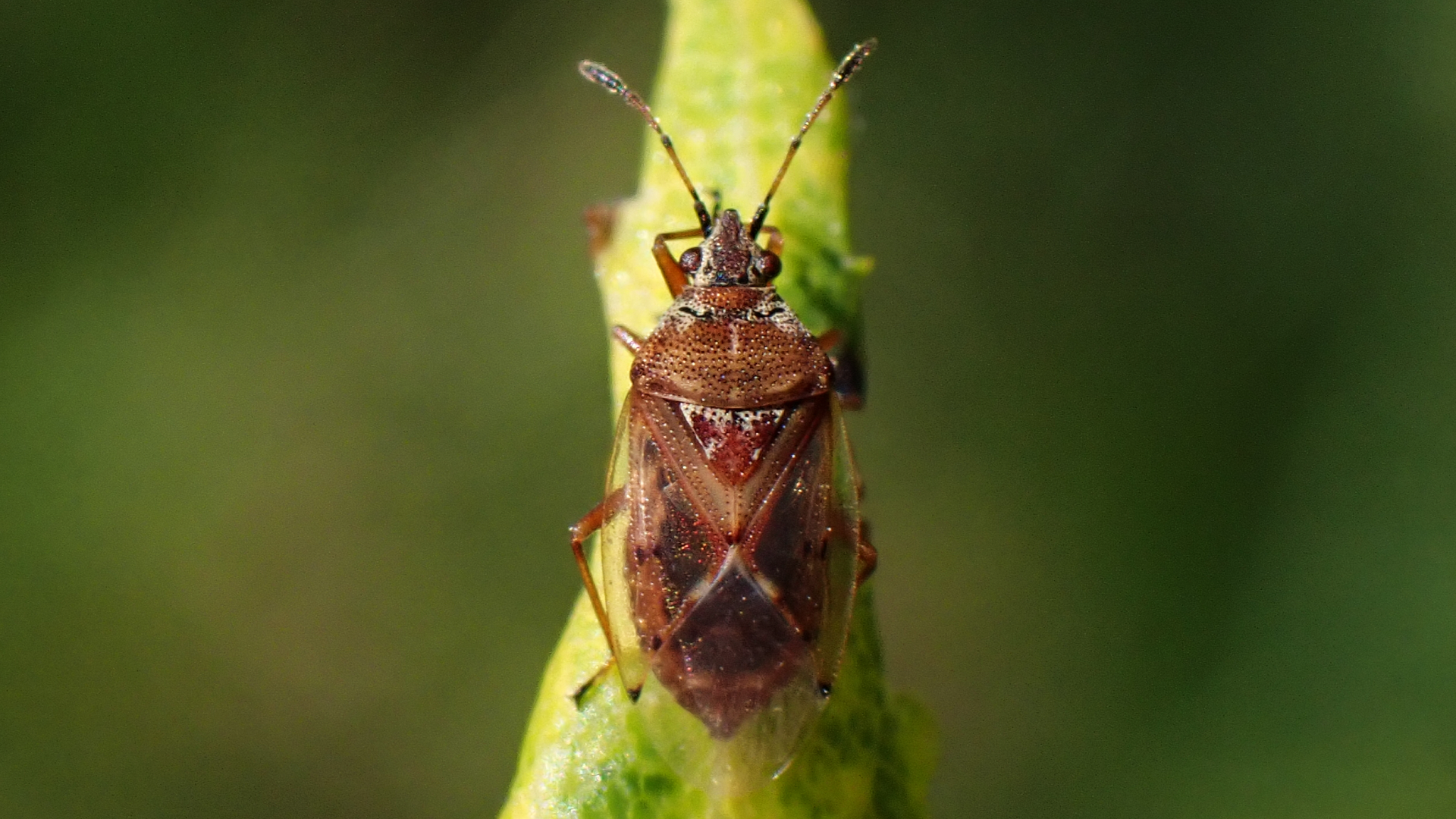

MAY 2024
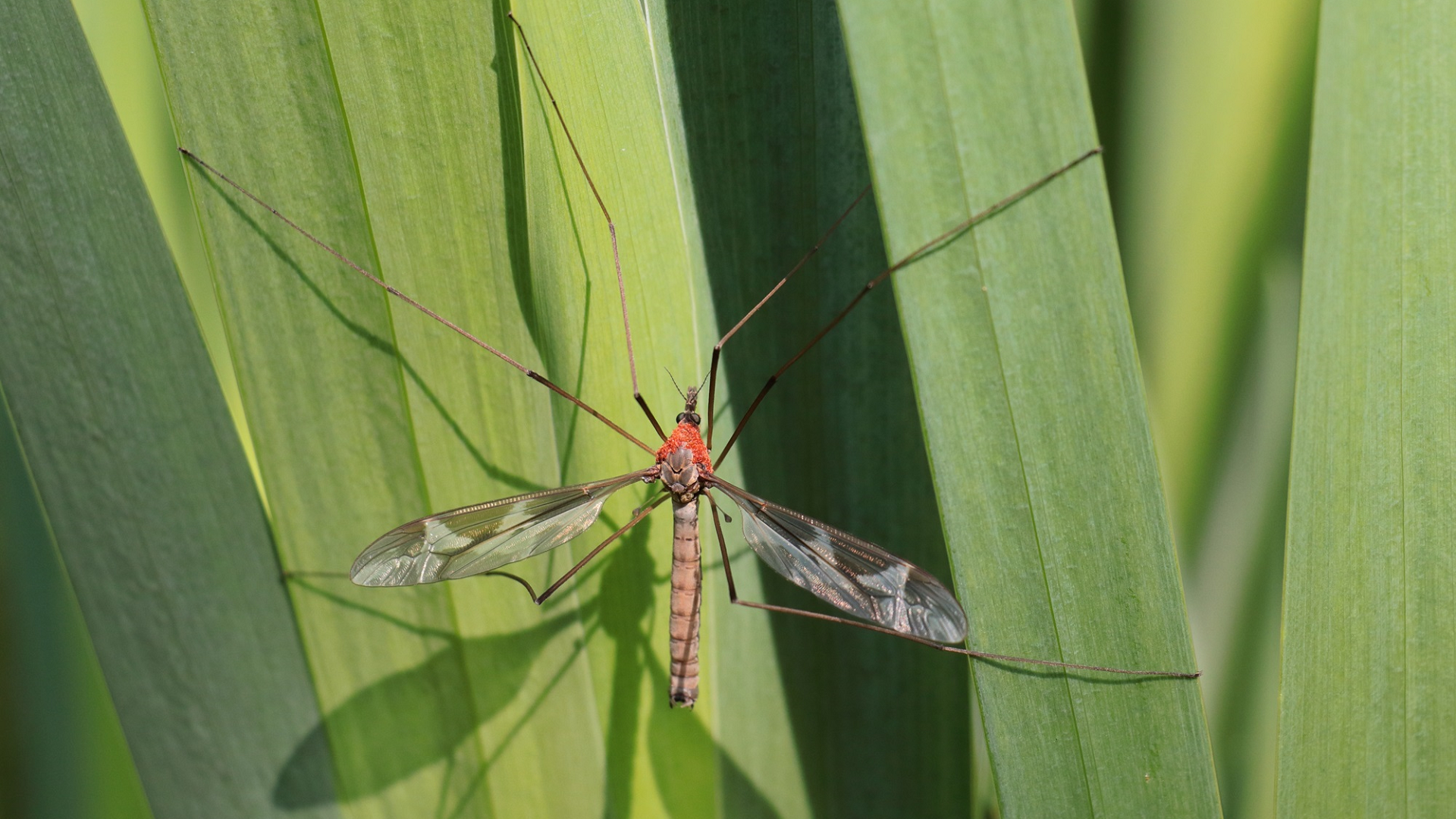
© Mike Rumble TQ4793 10/05/2024
Tipula maxima
is a large Crane fly with patterned wings and long legs. It has a preference for damp and wooded locations. Females lay eggs in mossy edges of ditches, streams and ponds. The larvae live in water just below the water surface and their development takes place in submerged leaf litter. This species is usually seen from April to August.
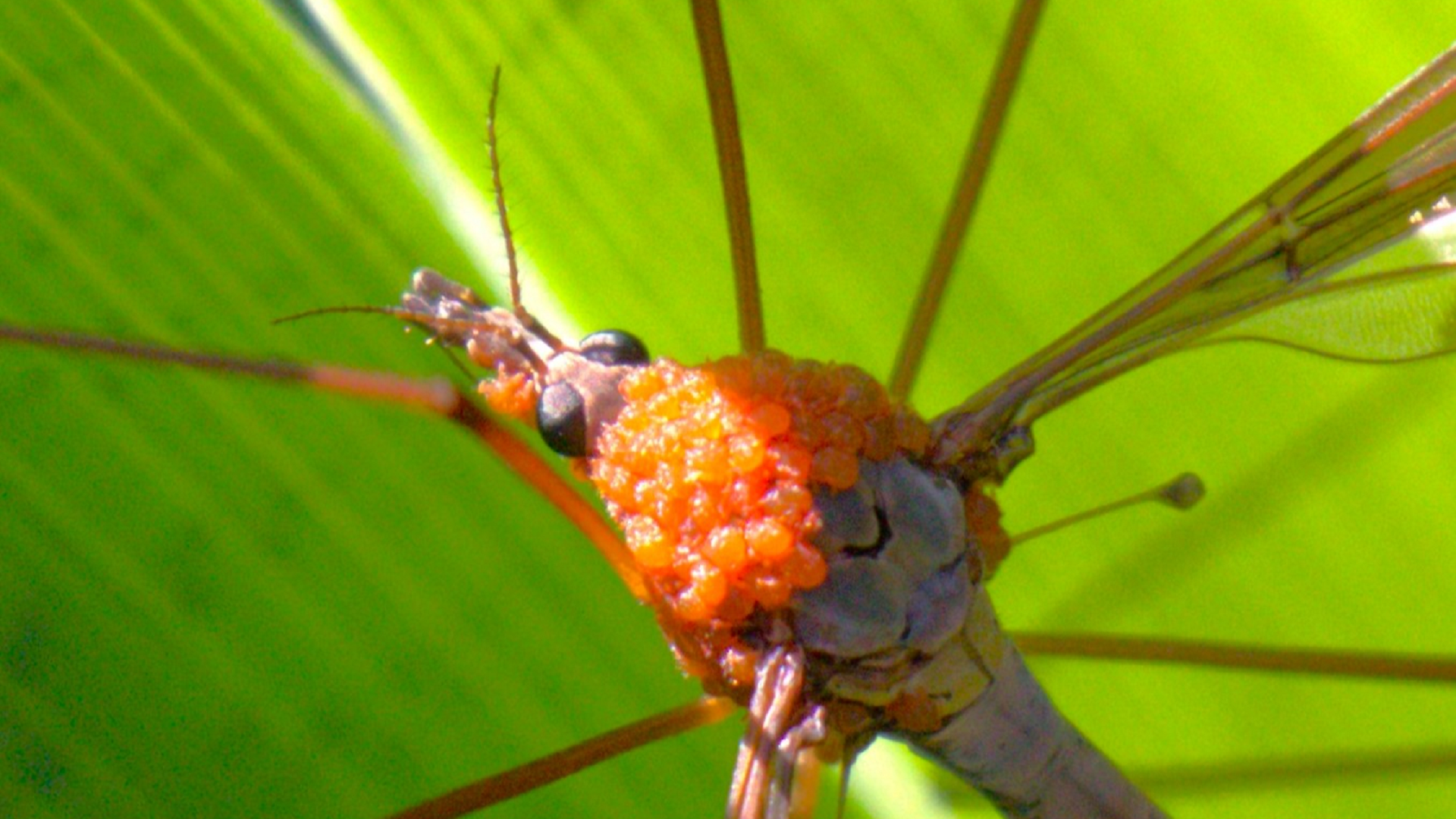
© Mike Rumble TQ4793 10/05/2024
Some mites have a symbiotic relationship which allows them to hitch rides on Crane-flies. Other mites are parasitic and feed on the Crane-fly's body fluid.
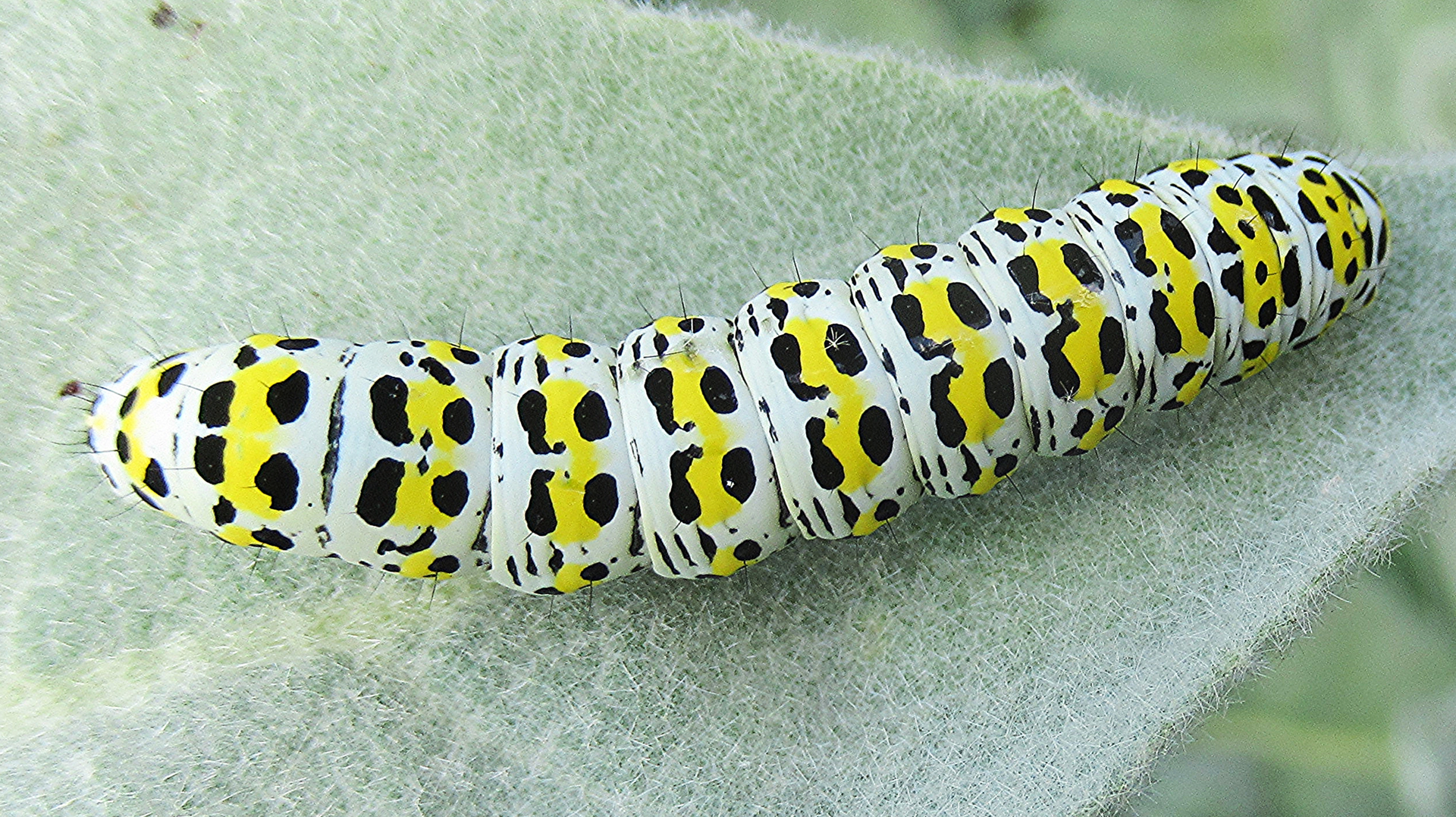
© Brian Ecott TQ4893 19/05/2024
Mullein moth Cucullia verbasci caterpillars feed on Aaron's Rod, Figwort and Buddleia from May to July. This specimen was found in a garden at Lambourne End.
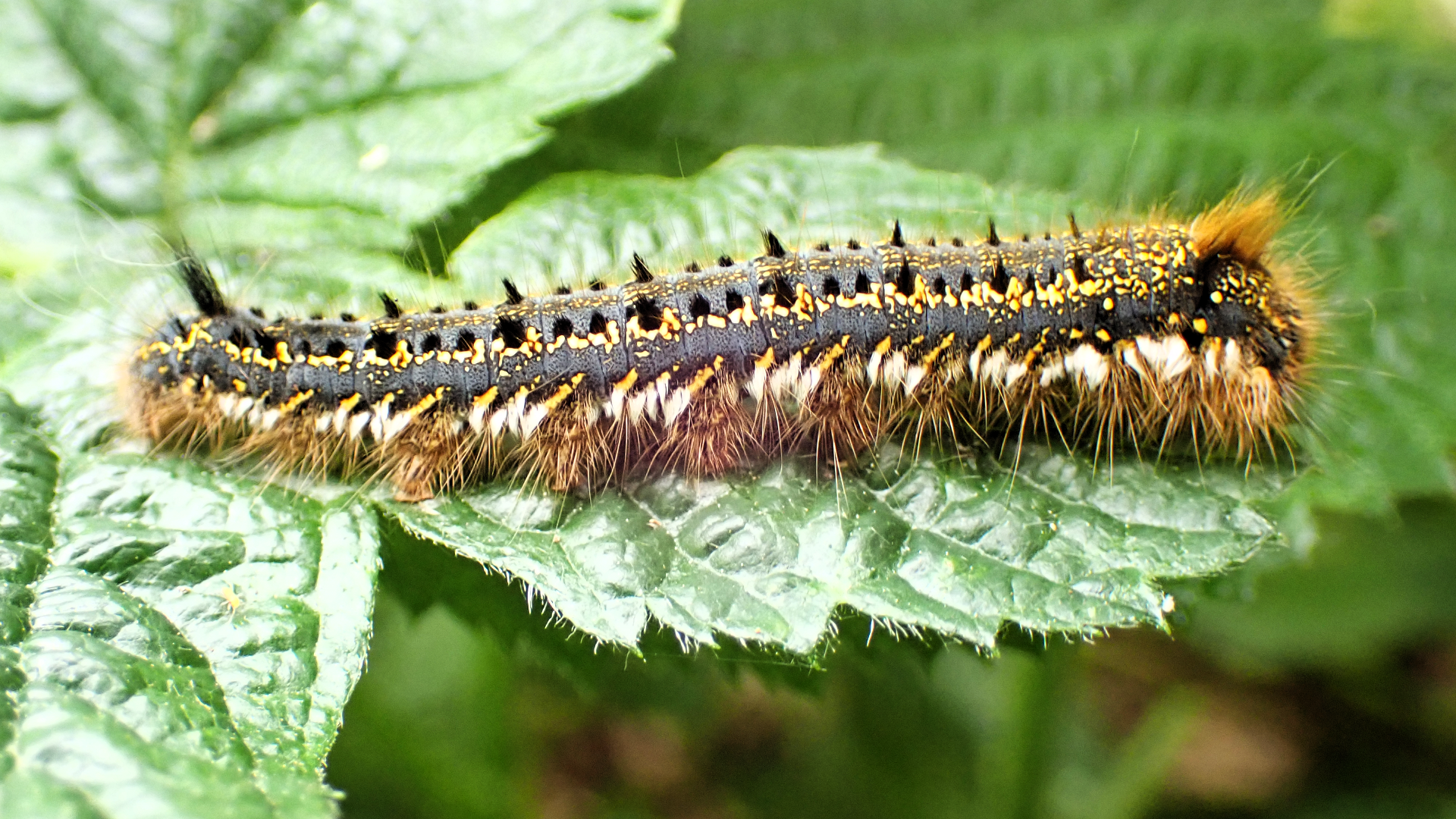
© Raymond Small TQ4793 16/05/2024
The large distinctive hairy caterpillars of the Drinker moth are seen during August and September before they hibernate. They resume feeding on coarse grasses and reeds from April until June.
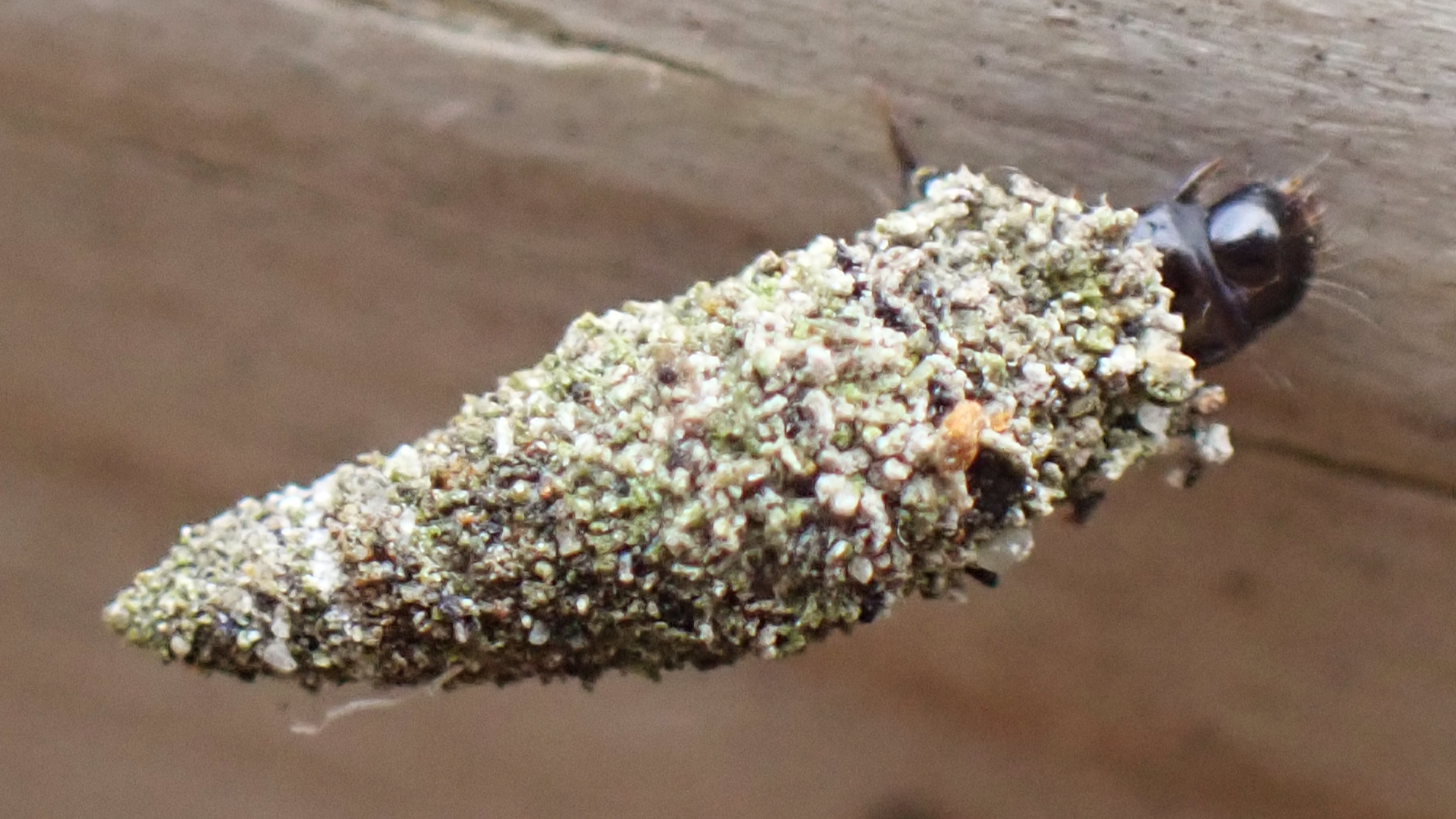
© Raymond Small TQ4692 02/05/2024
Larvae of the moth called Ramshorn Bagworm Luffia lapidella construct cases from lichens in which they live. Only parthenogenetic (self-fertile) wingless females are known in this species.
© Raymond Small TQ4792 17/05/2024
Birch Catkin Bug
Kleidocerys resedae is a tiny rust-red groundbug about 5mm in length that lives on or near Birch trees. The largely transparent forewings have a pattern of dark spots. Adults overwinter and emerge to mate in spring. There may be several generations in a year.
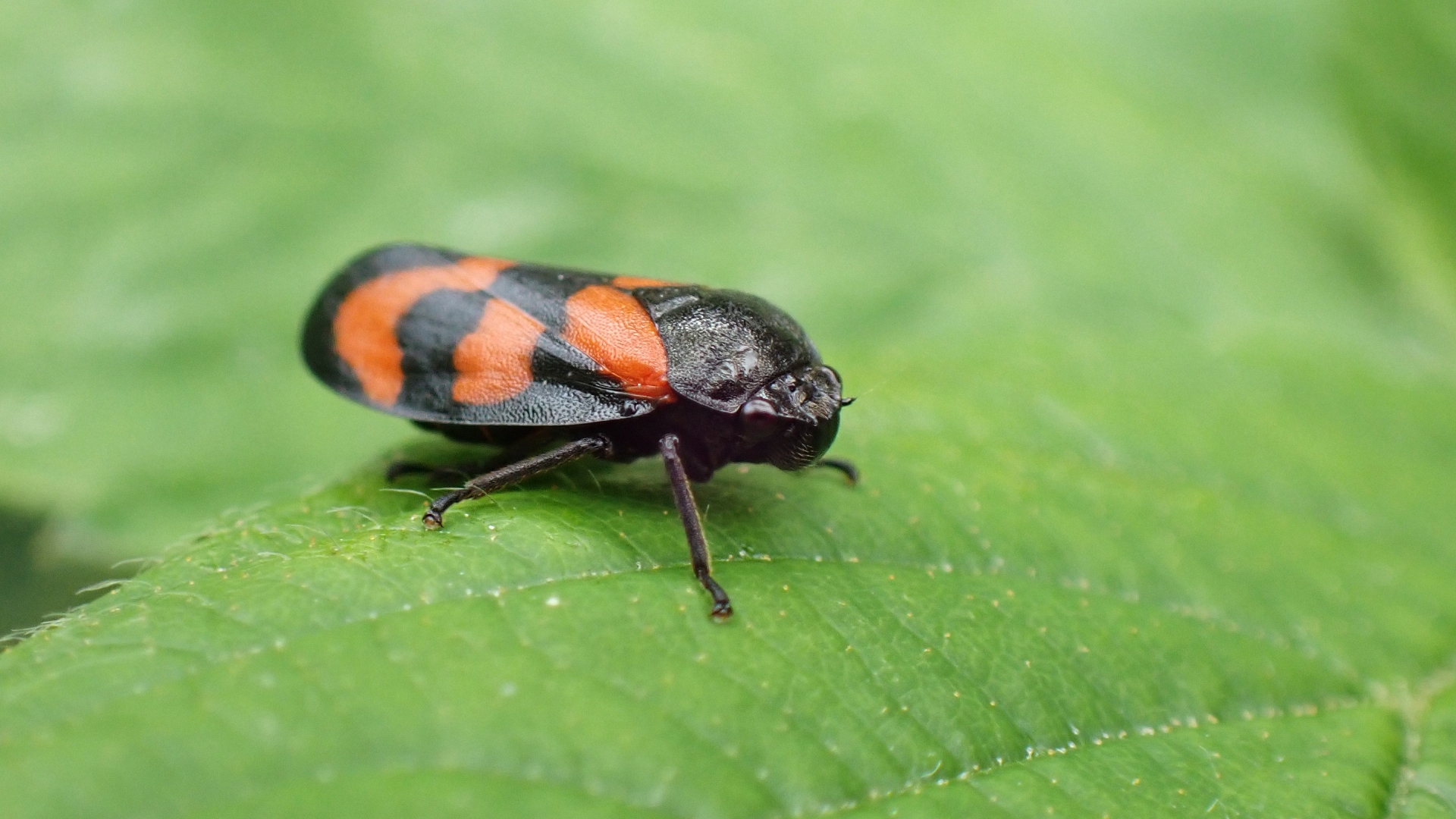
© Raymond Small TQ4793 16/05/2024
The Red-and-black Froghopper
Cercopis vulnerata
inhabits woodland and open spaces. It is a large Froghopper about 10mm long unlikely to be mistaken for any other.
Its nymphs are seldom seen because they feed on underground roots.
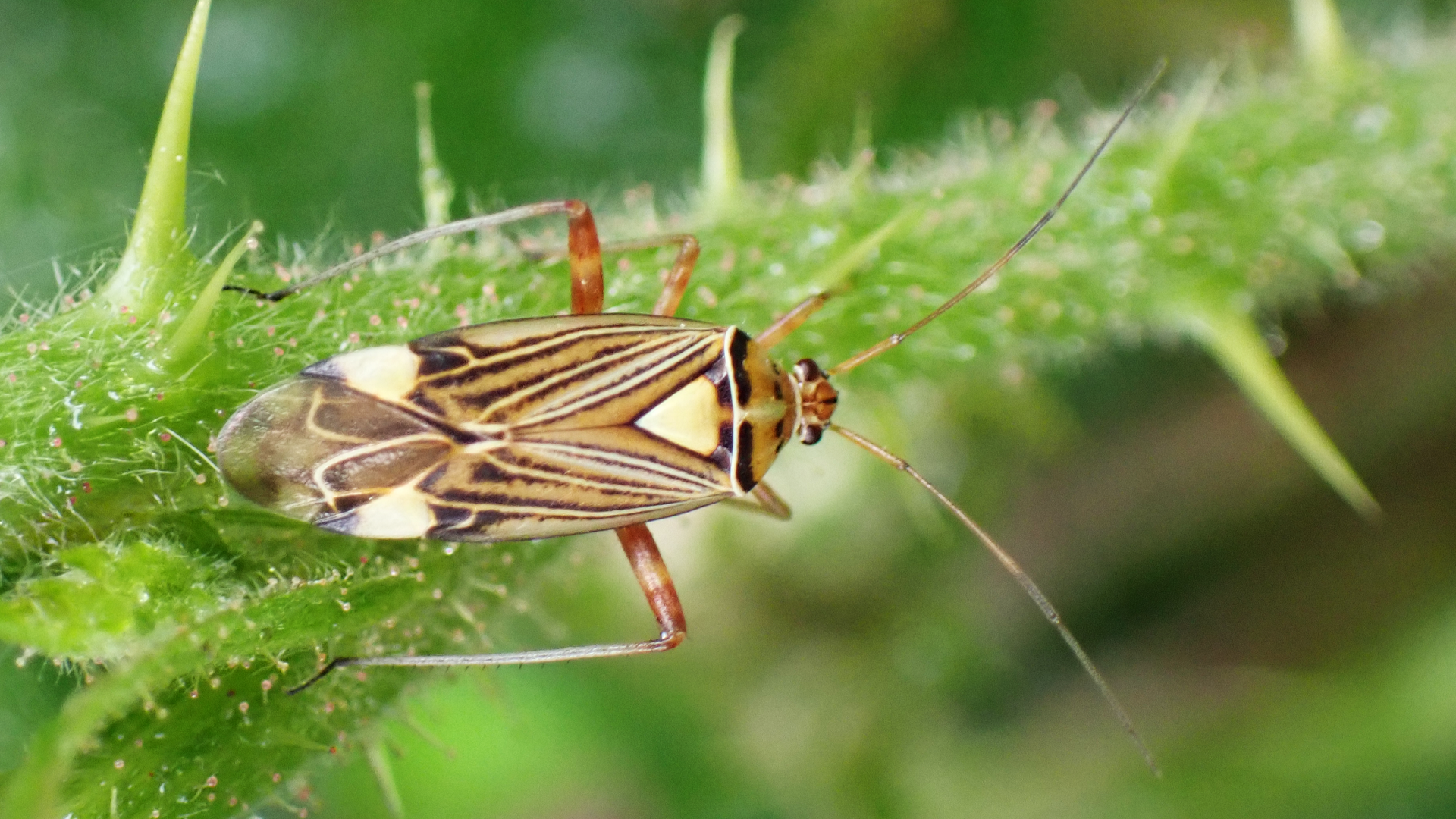
© Raymond Small TQ4793 16/05/2024
Striped Oak Bug
Rhabdomiris striatellus is a distinctive plant bug associated with Oak trees. Females normally have lighter colouration than males. Larvae hatch during April from overwintered eggs and become adults from mid-May onwards. Adults are 7-8mm in length.
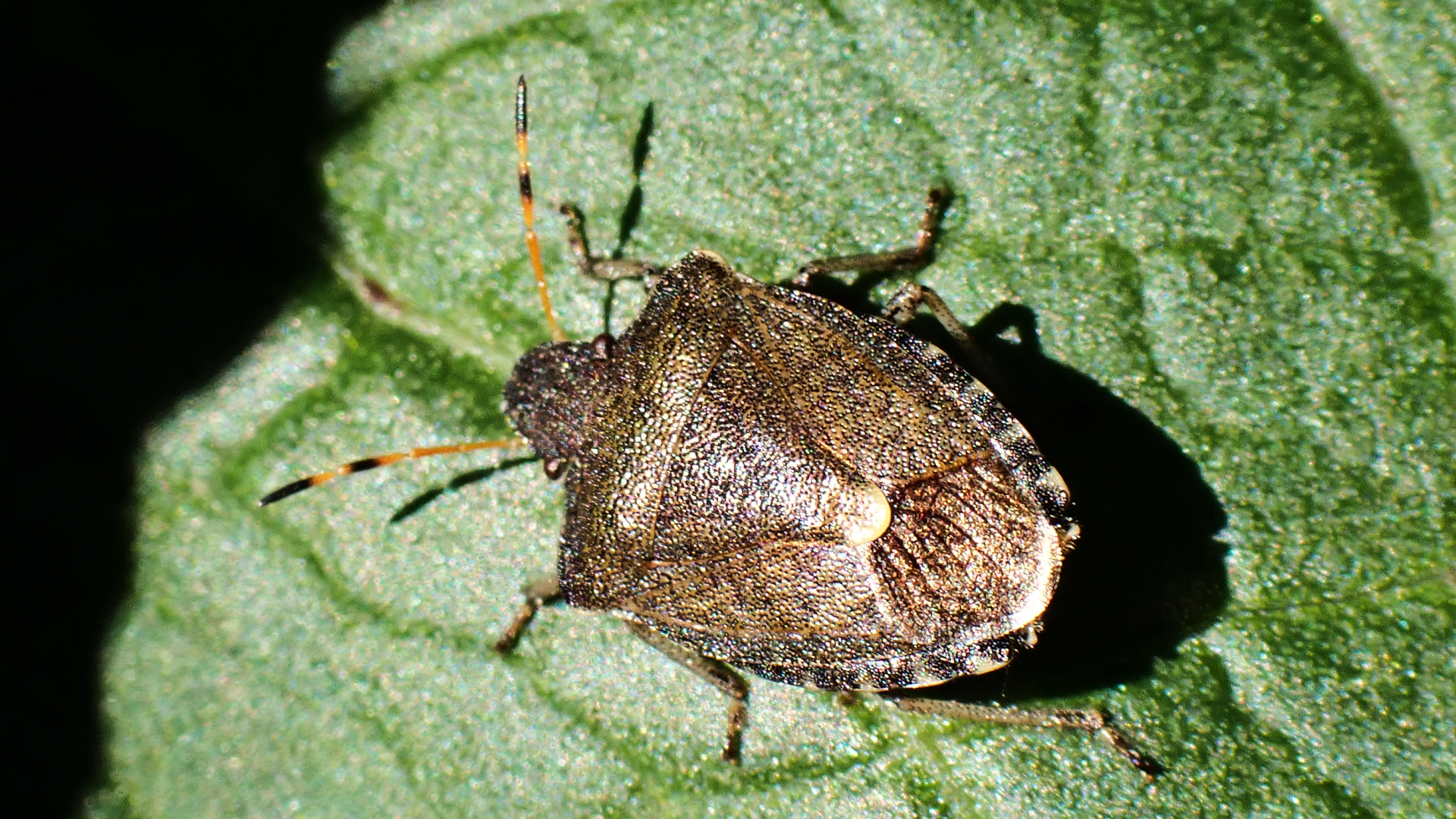
© Raymond Small TQ4793 20/05/2024
Bronze Shieldbug
Troilus luridus is a large predatory woodland insect measuring 10-12mm in length. The penultimate antennal segment is orange banded and the legs are brown. Its nymphs feed on insects, especially caterpillars, and also plants.
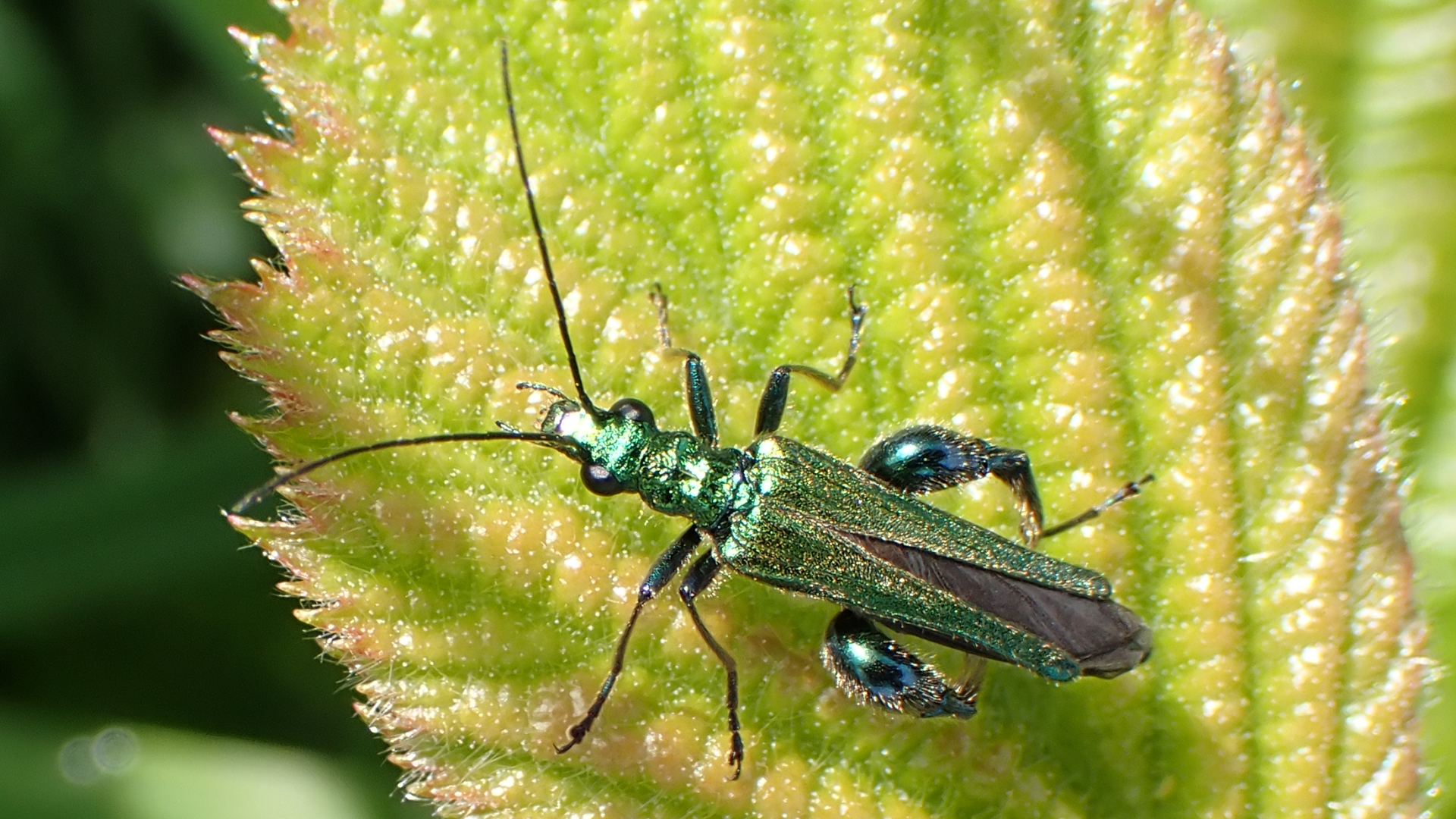
© Raymond Small TQ4793 17/05/2024
Fat-thighed Beetle
Oedemera nobilis visits flowers on sunny days during spring, summer and early autumn. Males have bulges on the femora of their hind legs, hence the common name. Adults emerge in spring to feed on pollen. They visit a range of flowers and are excellent pollinators. The larvae are rarely seen as they live inside stems of thistles and other plants. Males are instantly recognisable thanks to the large green bulges on the femora (thighs) of their hind legs. Females don't have fat thighs so can be mistaken for other similar species.
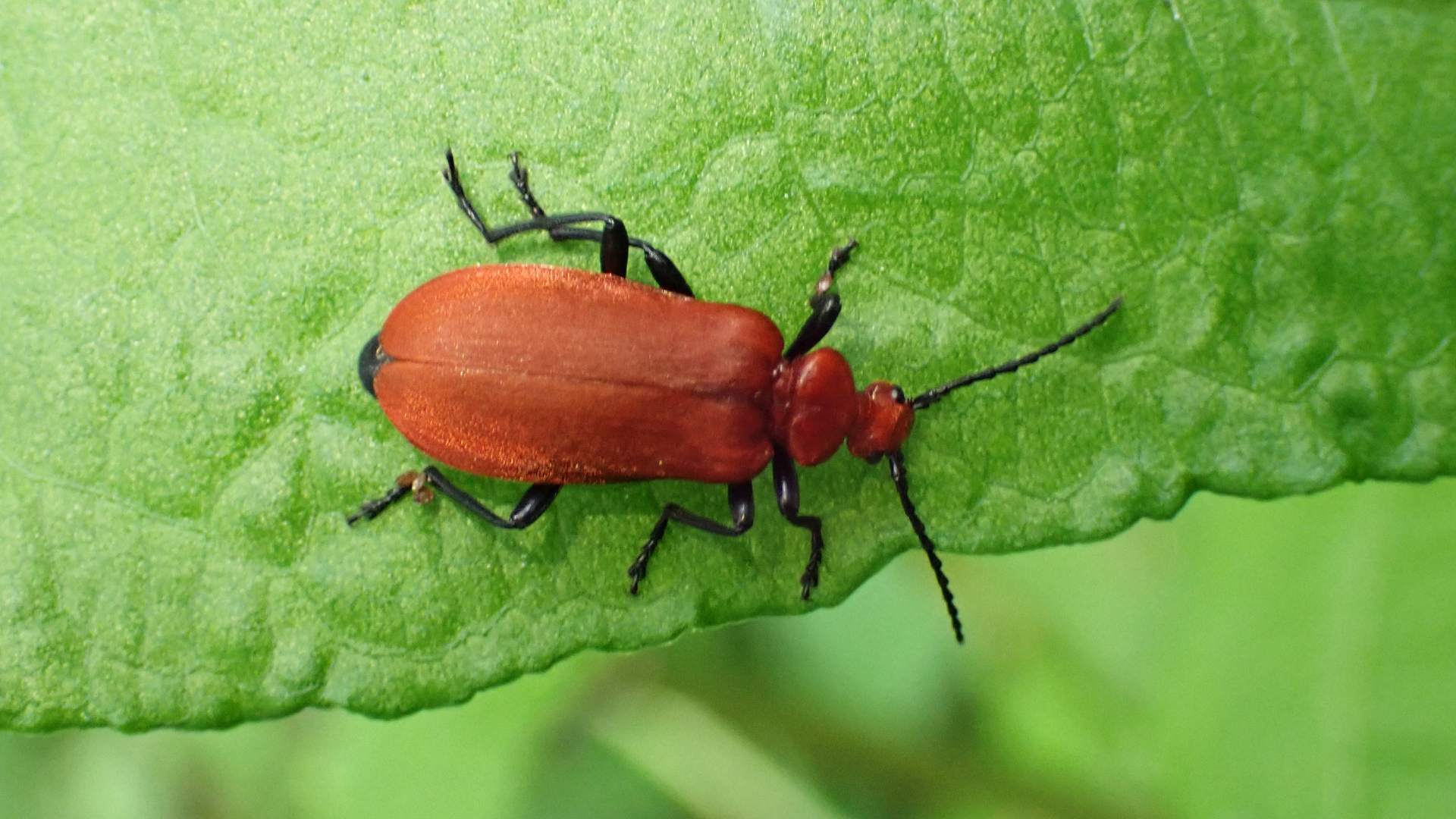
© Raymond Small TQ4793 14/05/2024
The Red-headed Cardinal Beetle Pyrochroa serraticornis is a common predator found on hedgerows looking for insects on which to feed. The second part of the scientific name is a reference to the serrated antennae.
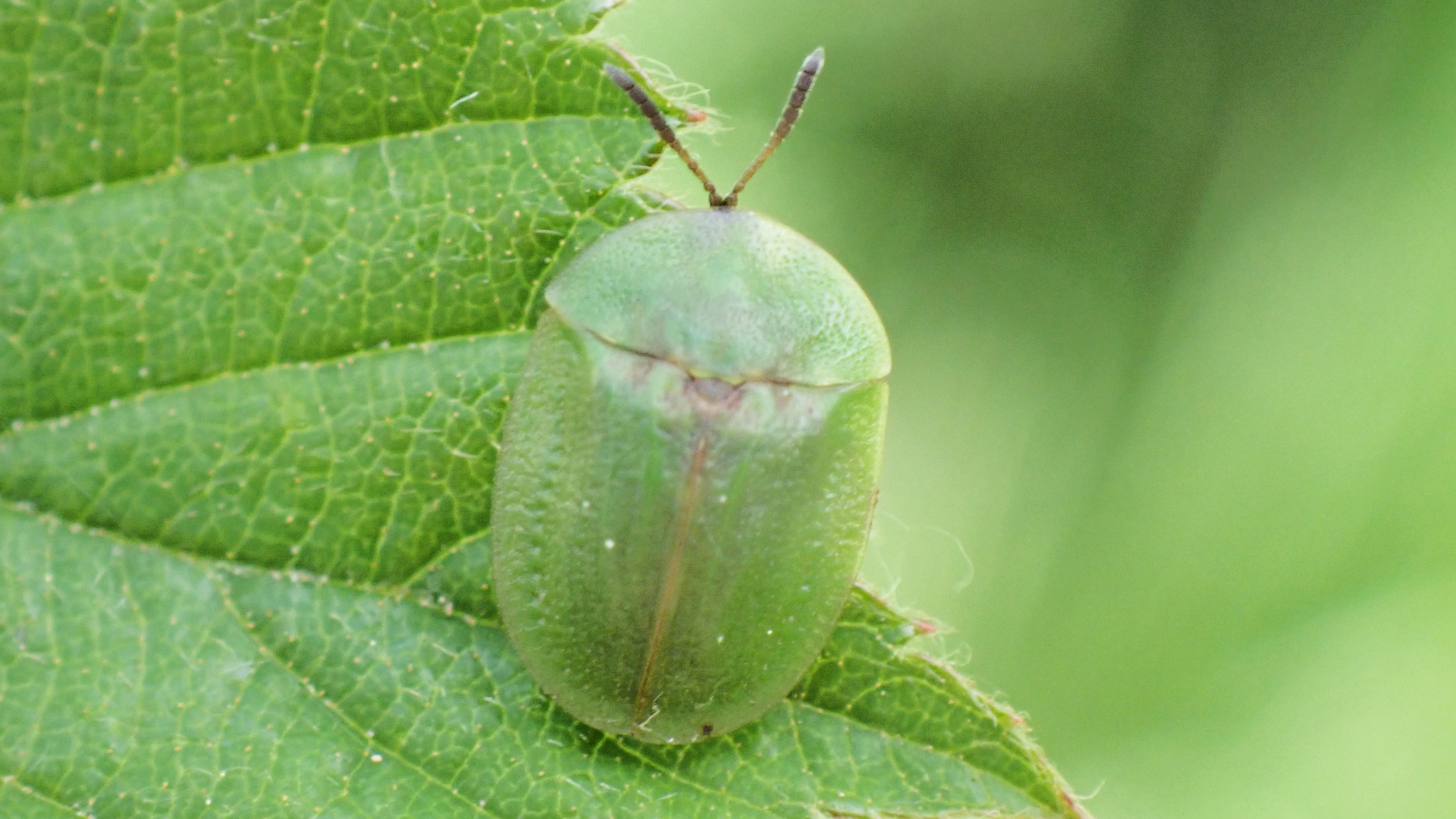
© Raymond Small TQ4792 17/05/2024
Thistle Tortoise Beetle
Cassida rubiginosa is green-bodied with brown markings on and around the scutellum. There are similar looking species; this one frequents rough grassland where Creeping Thistle grows. It is usually found sitting tightly close to the leaf and can easily be overlooked because it blends in well with the background. The specific name
rubiginosa refers to the beetle's ability to produce a red liquid from the head. The body length is 6-8mm.
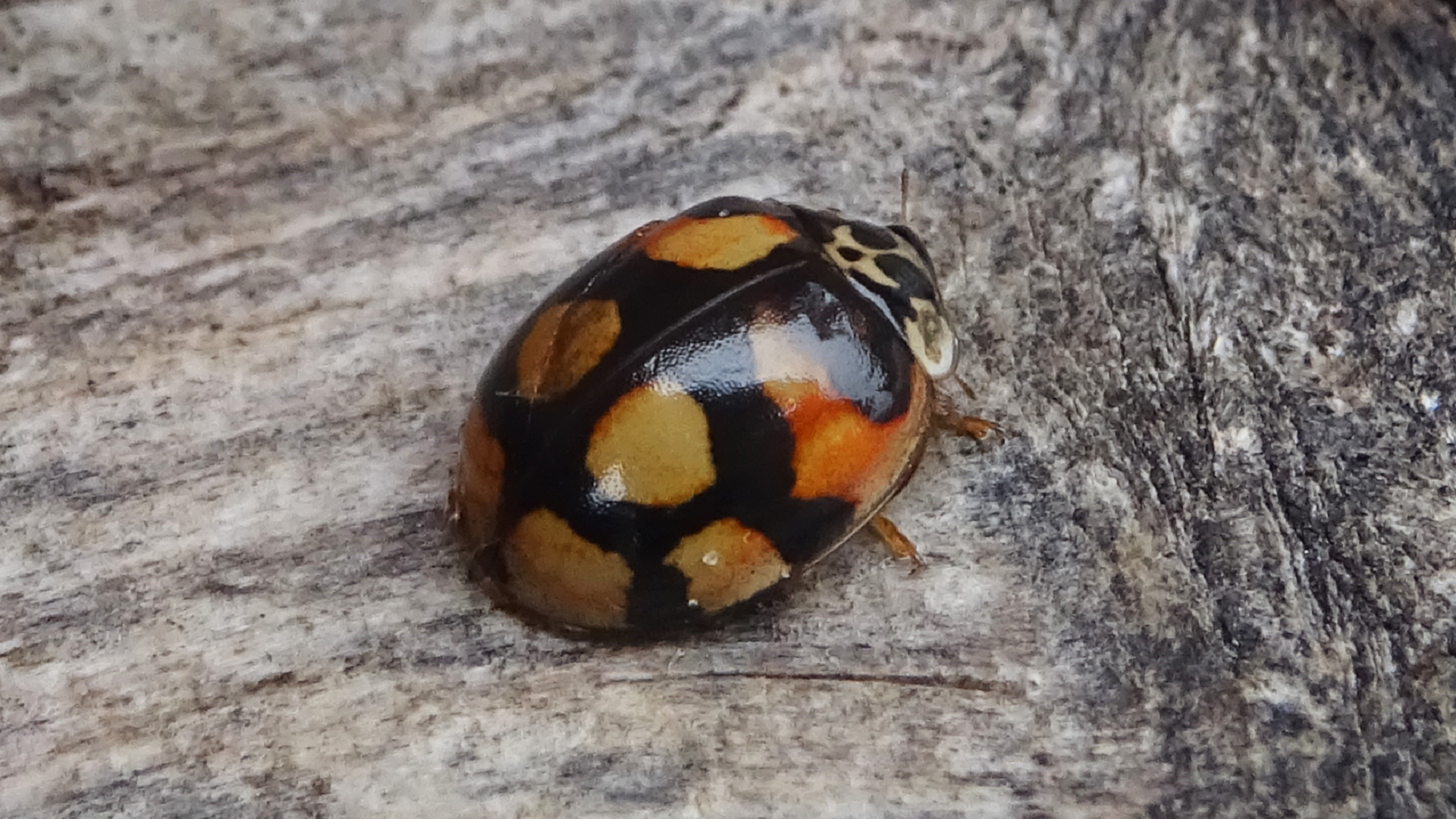
© Raymond Small TQ4792 02/05/2024
The 10-Spot Ladybird
Adalia decempunctata is a small beetle that doesn't always have ten spots. Fresh specimens have light-brown background colouration to begin with. The brown legs can be useful when identifying this Ladybird. They feed on aphids.
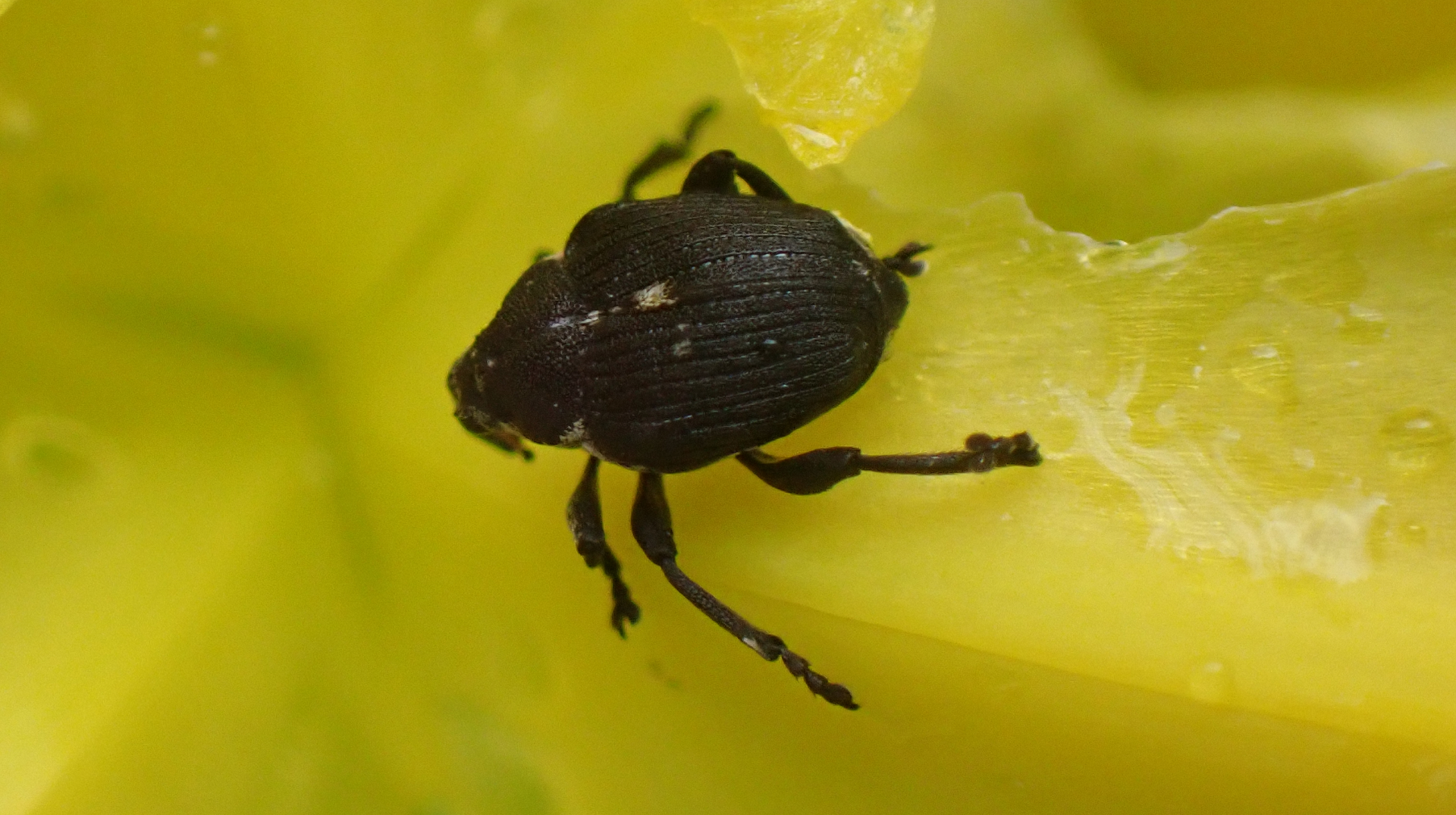
© Raymond Small TQ4792 22/05/2024
Iris Weevil Mononychus punctumalbum has a preference for damp locations. Adults appear in May and June to feed on Iris plants. The female bores into developing seed pods and inserts an egg into several of the seeds which the hatched larvae consume. A new generation of adults appears during autumn to feed for a short time before entering leaf litter to overwinter.
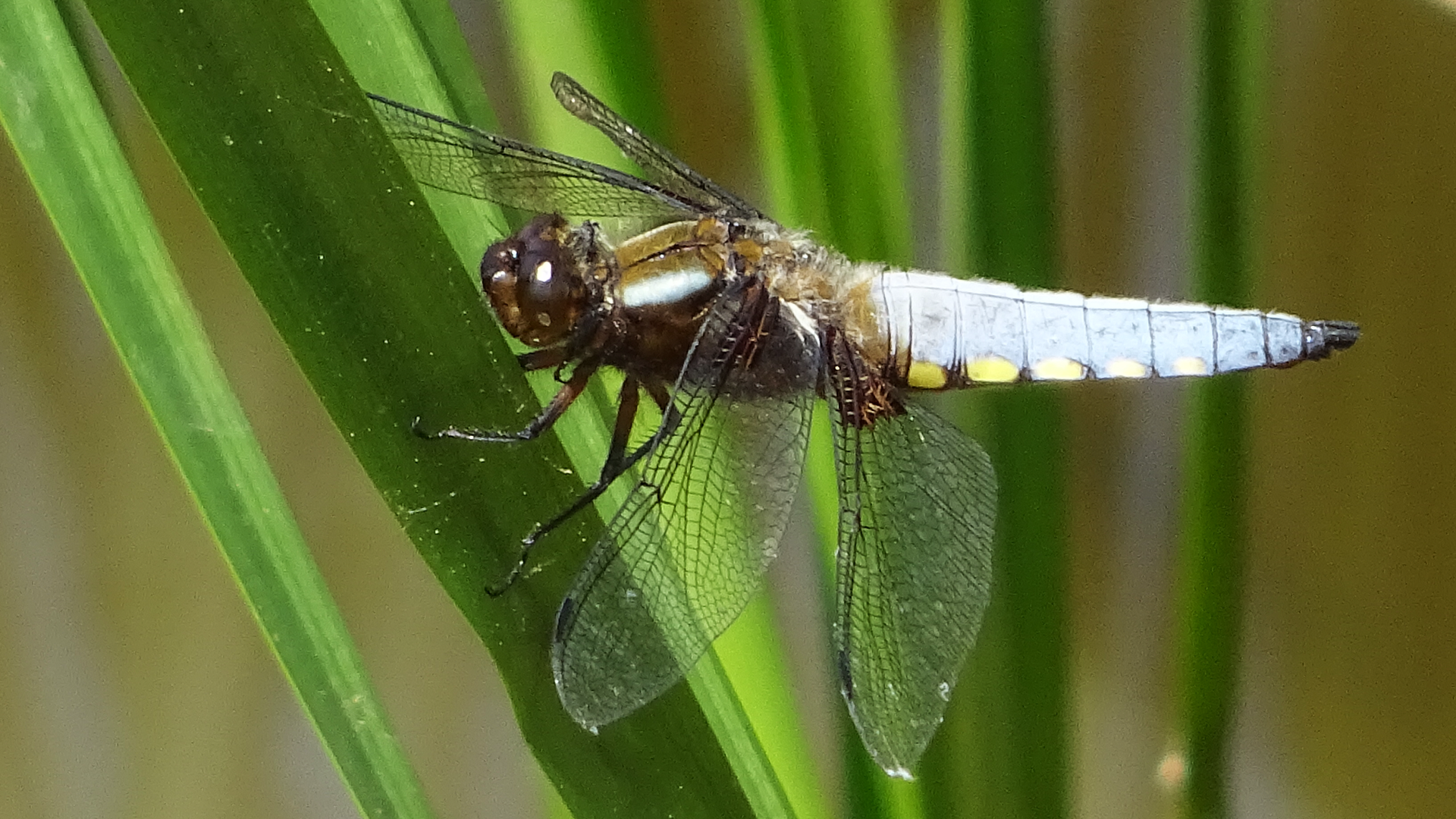
© Raymond Small TQ4894 20/05/2024
The
Broad-bodied Chaser
Libellula depressa is usually found near ponds and lakes from May to July. Females are golden-brown, whereas males have a blue abdomen. Both sexes have very dark brown wing bases and yellow spots along the side of the body. Immature adults have similar colouration to females.
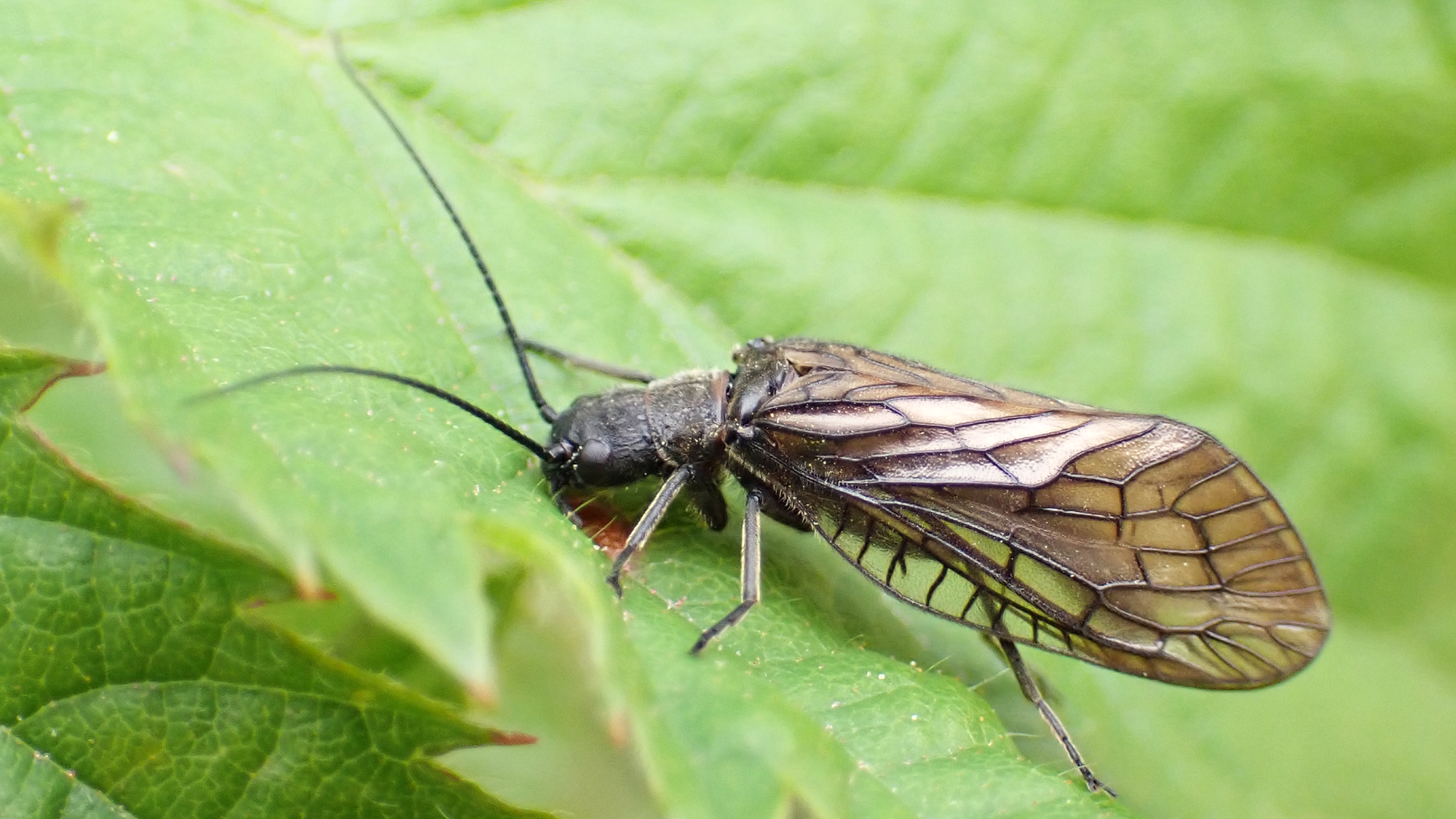
© Raymond Small TQ4792 02/05/2024
Alderflies
Sialis sp. have heavily-veined wings that are folded over the body like a tent when at rest. They are often seen near Hainault Lake in spring and summer. Their larvae live in the silt at the bottom of the lake.
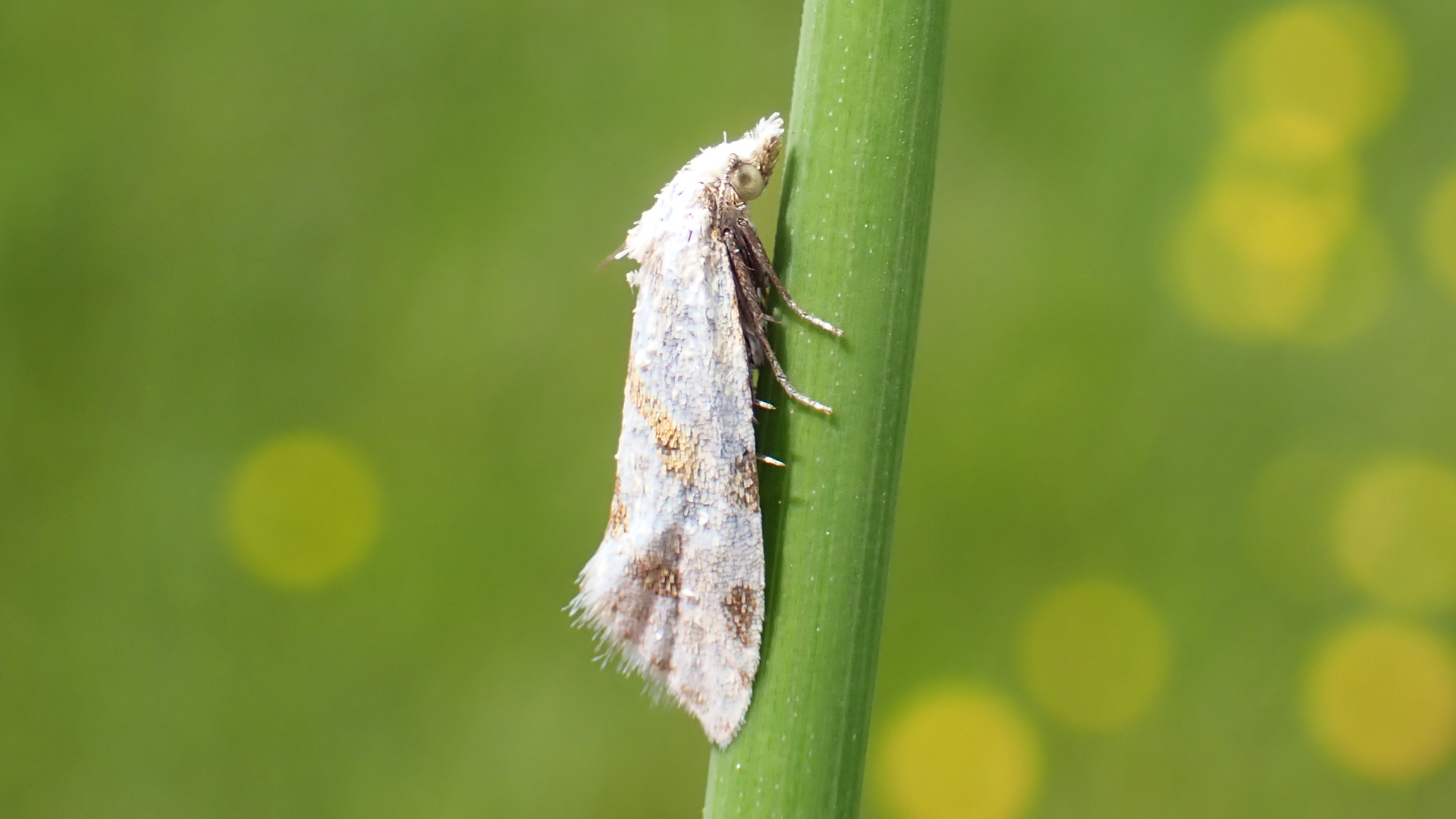
© Raymond Small TQ4792 17/05/2024
Common Marbled Straw Aethes smeathmanniana is found on rough grassland and scrub from May until August. Yarrow and Knapweed are its foodplants. This moth has recently undergone a name change and was formerly known as the Yarrow Conch.
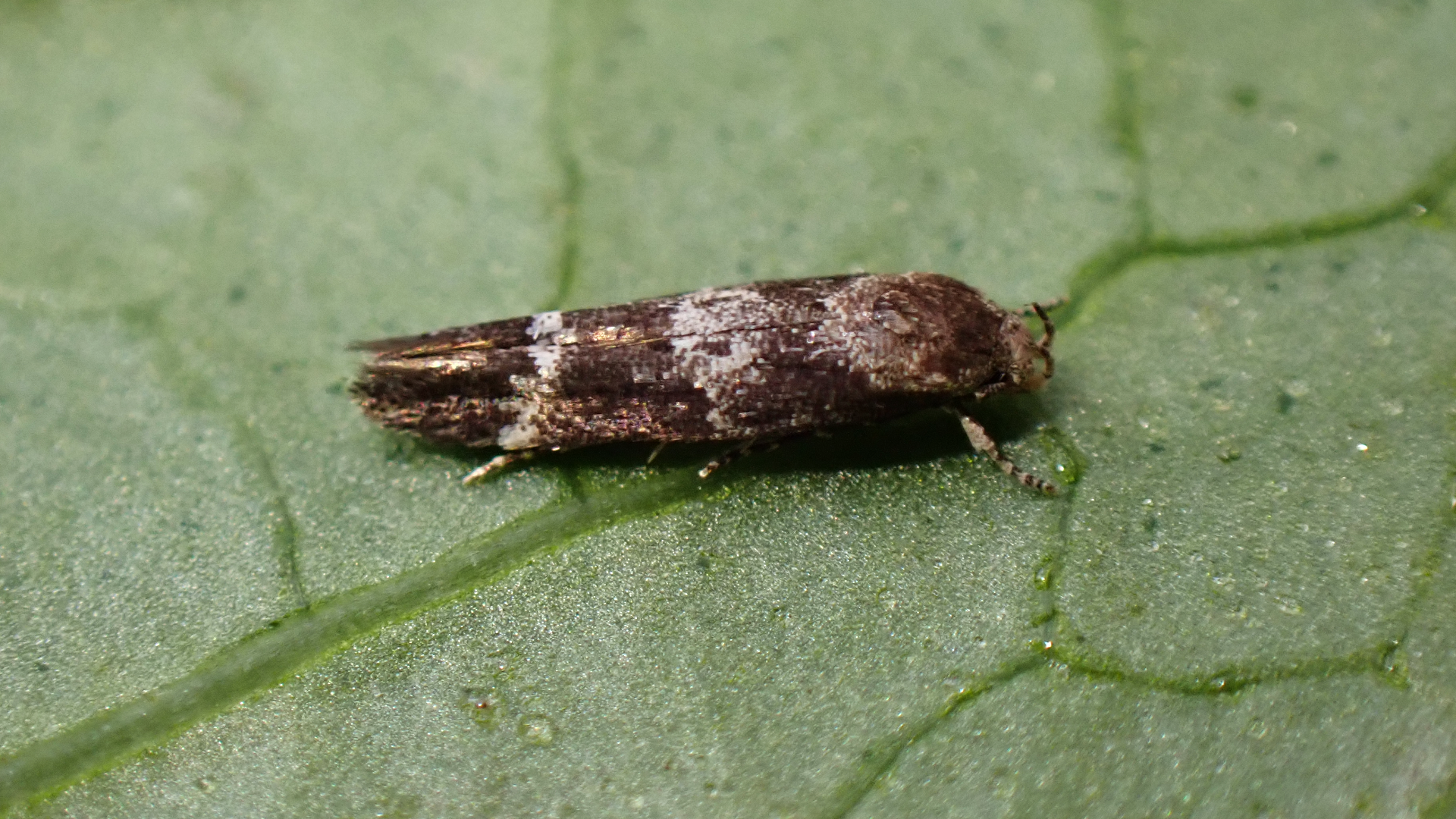
© Raymond Small TQ4692 01/05/2024
Garden Mompha Mompha subbistrigella is a common micro-moth that can be found most of the year. It has a preference for damp locations and overwintering in garden sheds. Its larvae feed within the seedpods of various willowherbs.
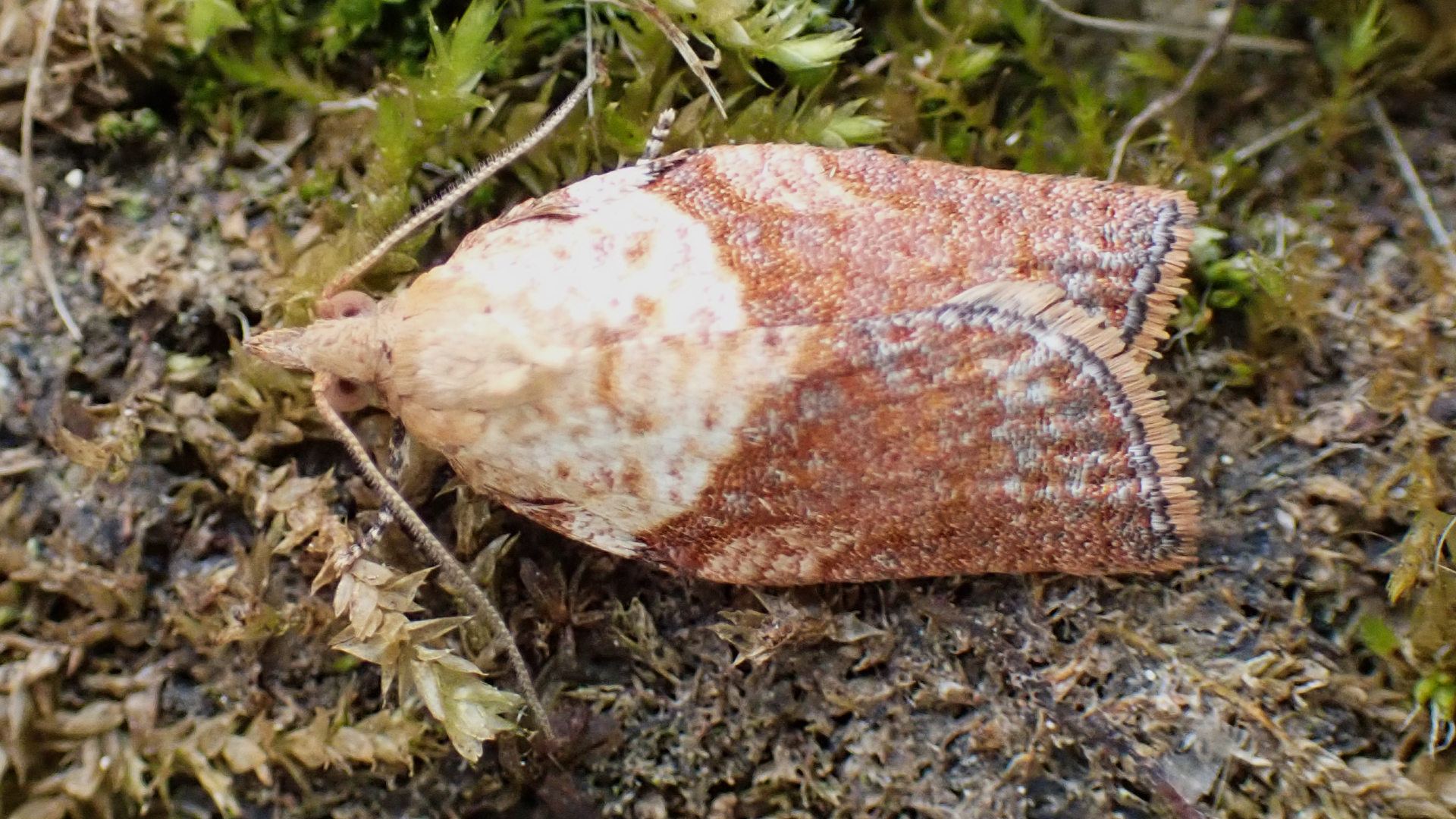
© Raymond Small TQ4692 01/05/2024
This species was accidentally introduced into Cornwall from Australia in the 1930s and has since spread across the country. Light Brown Apple Moth Epiphyas postvittana is extremely variable with numerous forms. Females are larger than the males. Males can usually be identified by an abrupt colour division on the forewing.
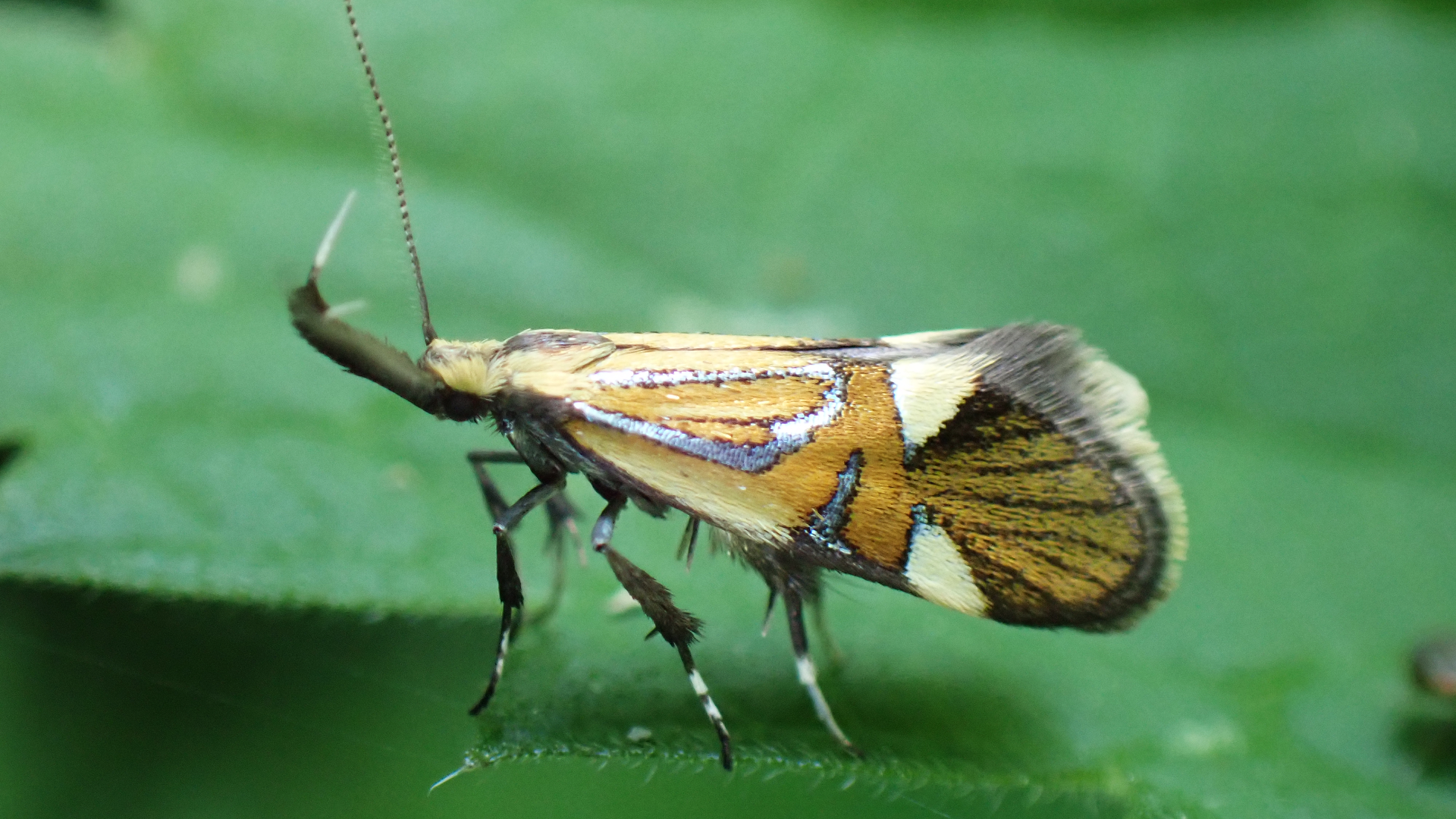
© Raymond Small TQ4793 20/05/2024
Hedge Beauty Alabonia geoffrella was formerly known as the Common Tubic. This tiny moth flies in May and June and is common on woodland hedgerows early in the day. Its been a particularly good year to see them in Hainault Forest.
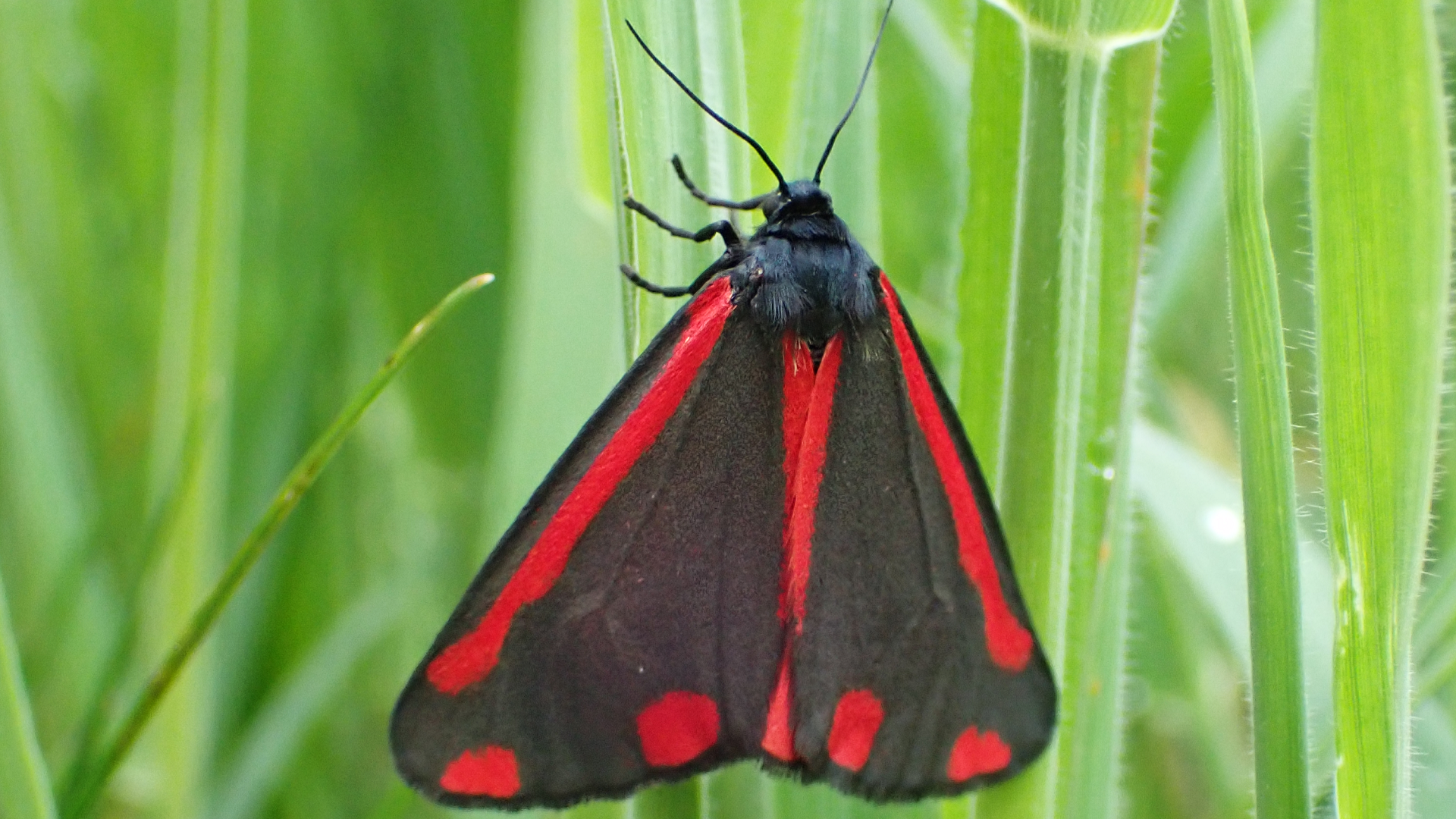
© Raymond Small TQ4792 18/05/2024
The Cinnabar Tyria jacobaeae is found in locations where Common Ragwort grows. In a few weeks there will be thousands of yellow and black hooped caterpillars on the larval foodplant in Hainault Forest.
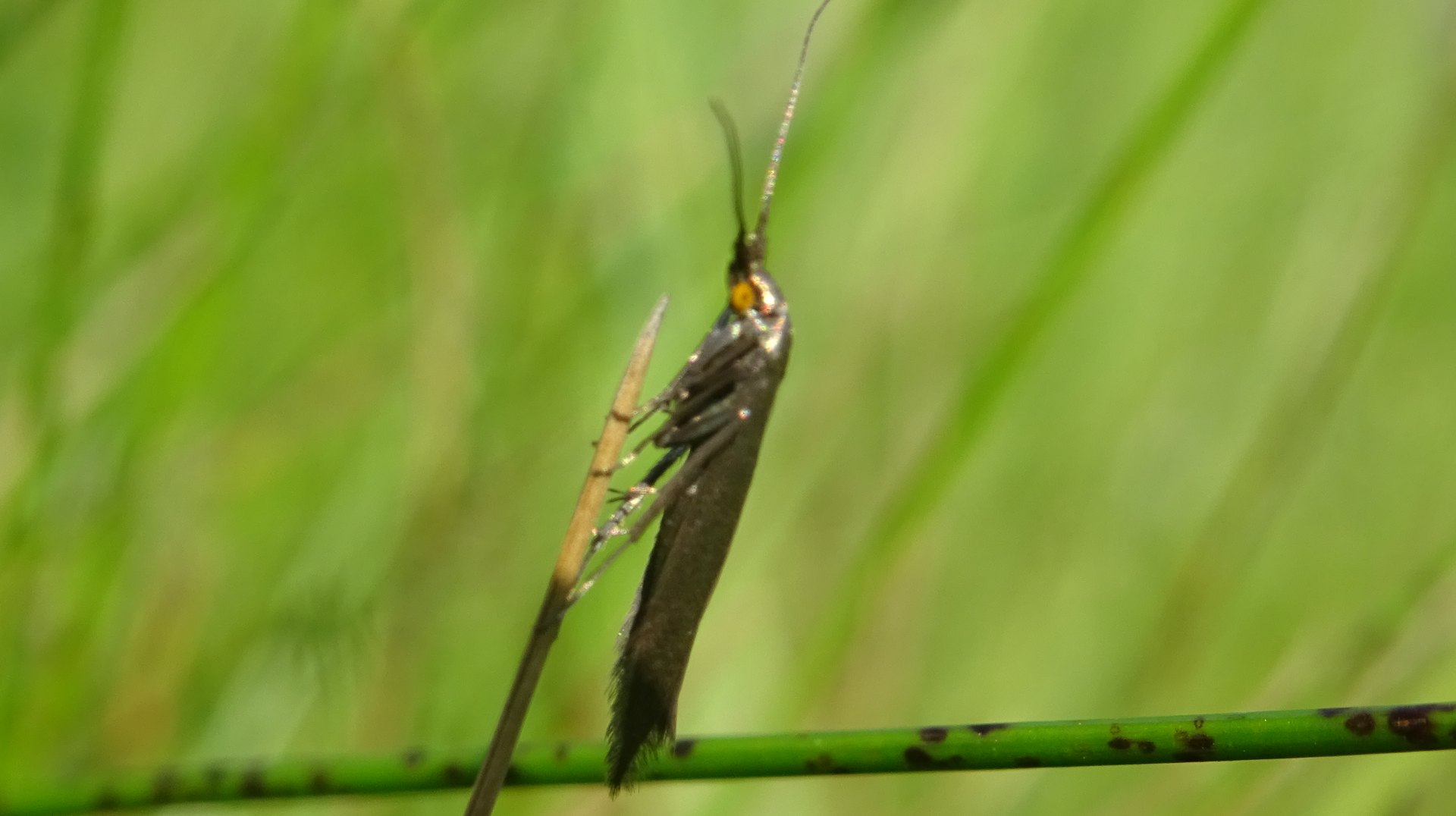
© Raymond Small TQ4894 20/05/2024
Tare Case-bearer Coleophora amethystinella was formerly known as the Coast Green Case-bearer. A rare and local species was first recorded in Essex during 1973. This bronze-coloured moth can be identified by its orange eyes and pair of eyelashes, it also lacks white on the antennae. Its larvae feed on Smooth Tare Vicia tetrasperma, boring into seedpods that are used as portable cases.
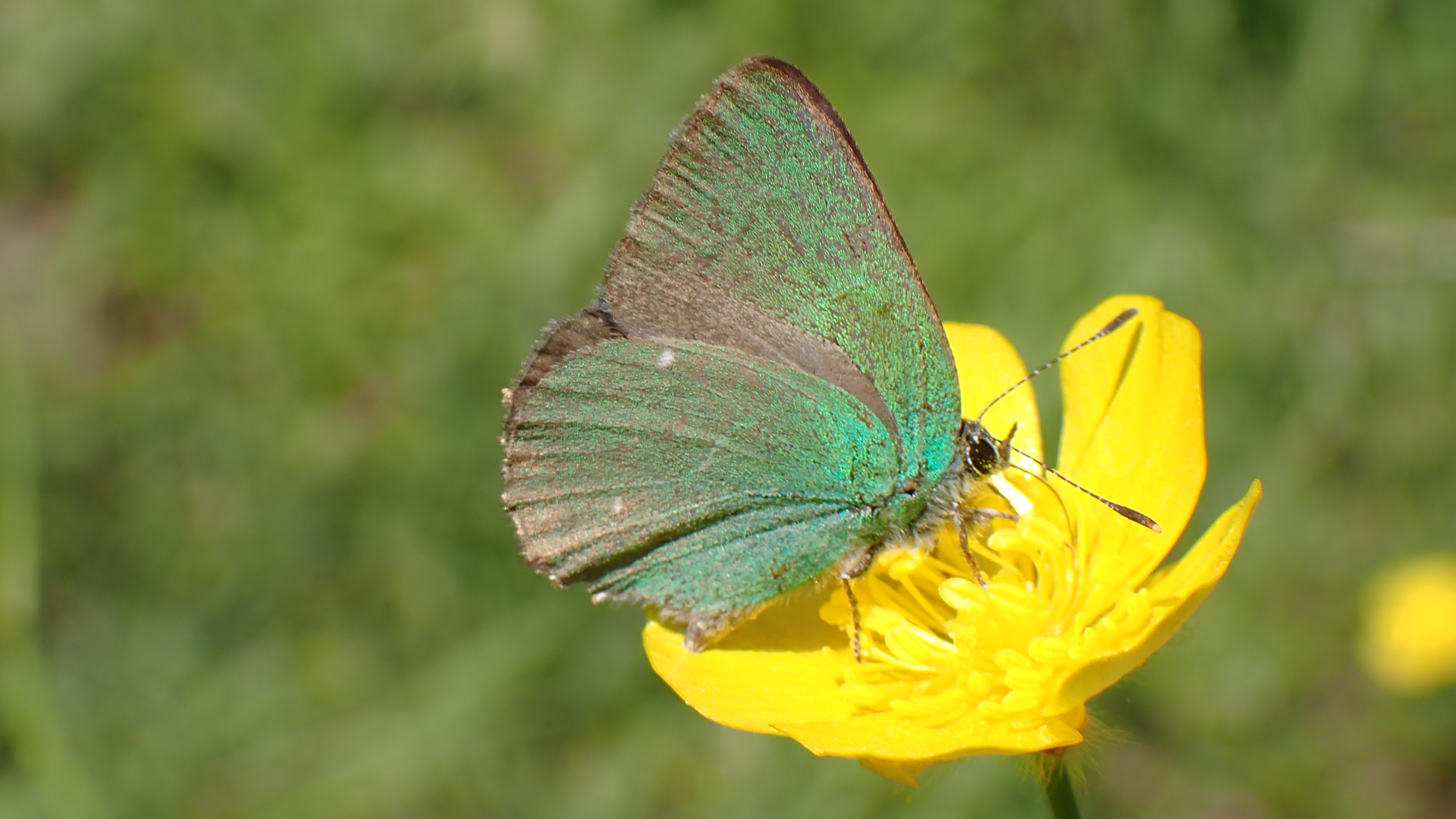
© Raymond Small TQ4894 20/05/2024
Several Green Hairstreaks Callophrys rubi were seen visiting buttercups in the meadows located on the east side of Hainault Forest.
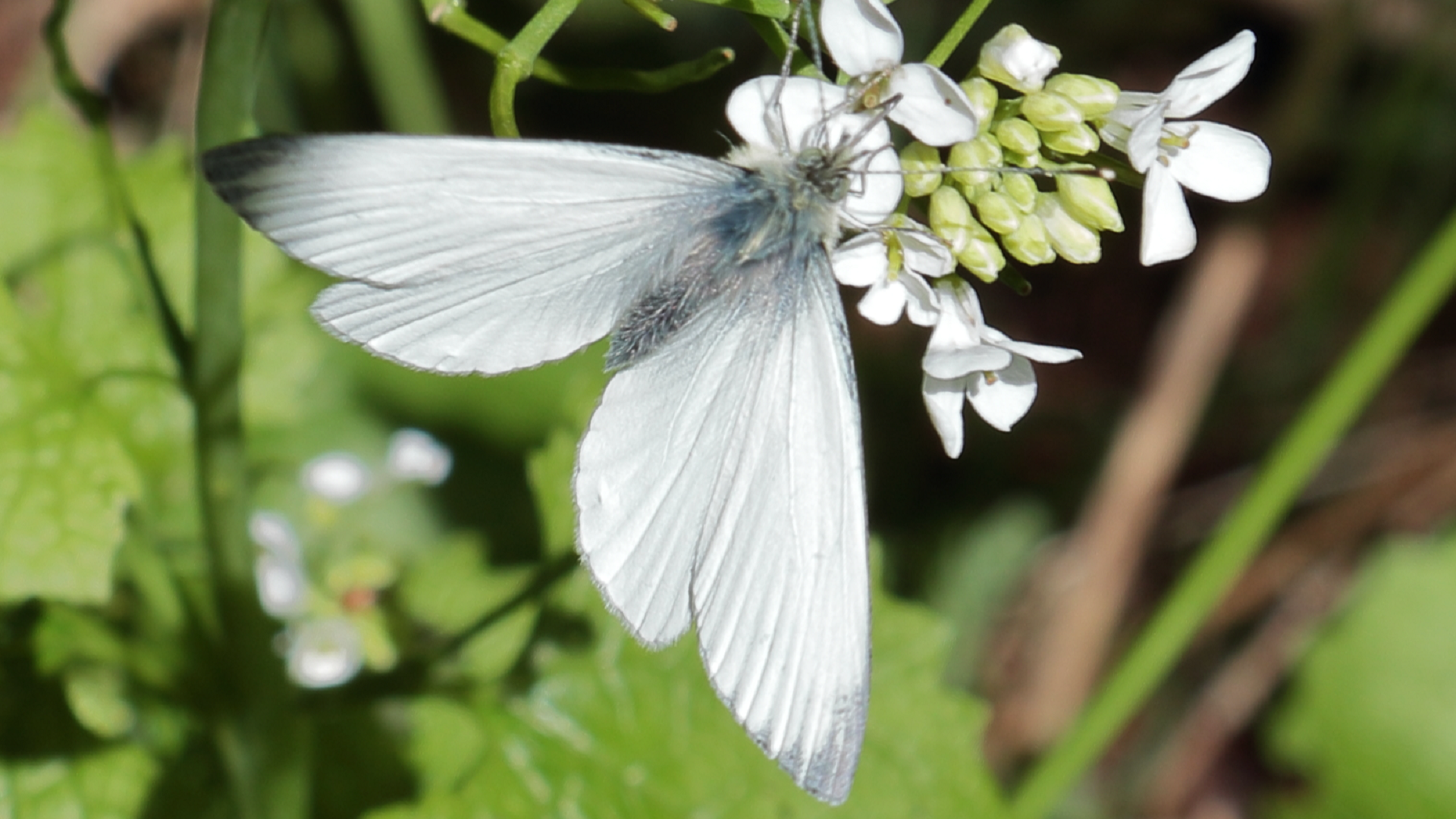
© Mike Rumble TQ4793 05/05/2024
A best way to identify a Green-veined White butterfly Pieris napi is by looking for prominent greenish veins on the hind wings. Their larvae feed on plants in the Cabbage family.
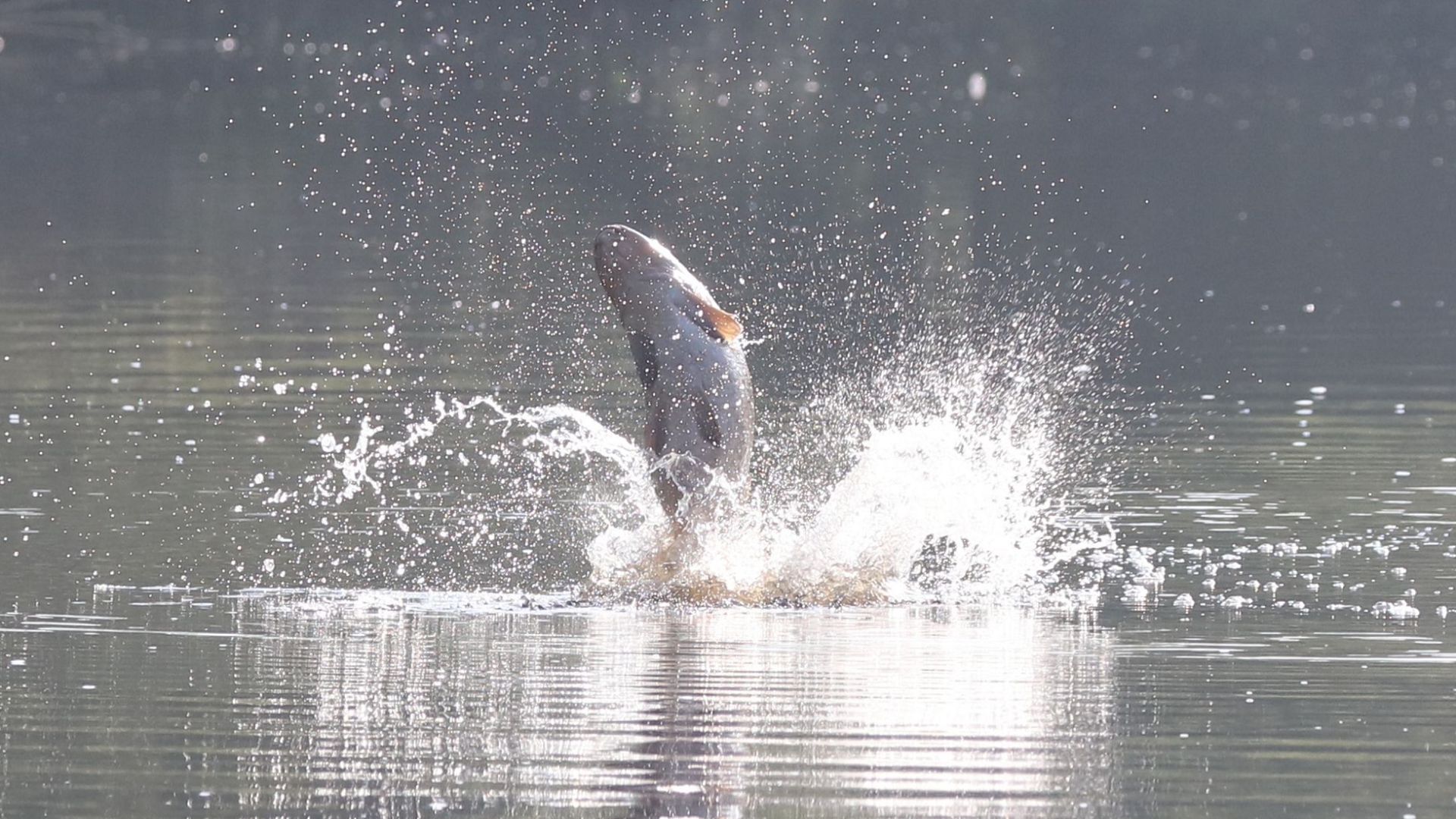
© Michael Trump TQ4792 10/05/2024
Carp are sometimes seen jumping into the air. They do this to regulate pressure in the swim bladder. Gases contained in the swim bladder assist in controlling buoyancy.
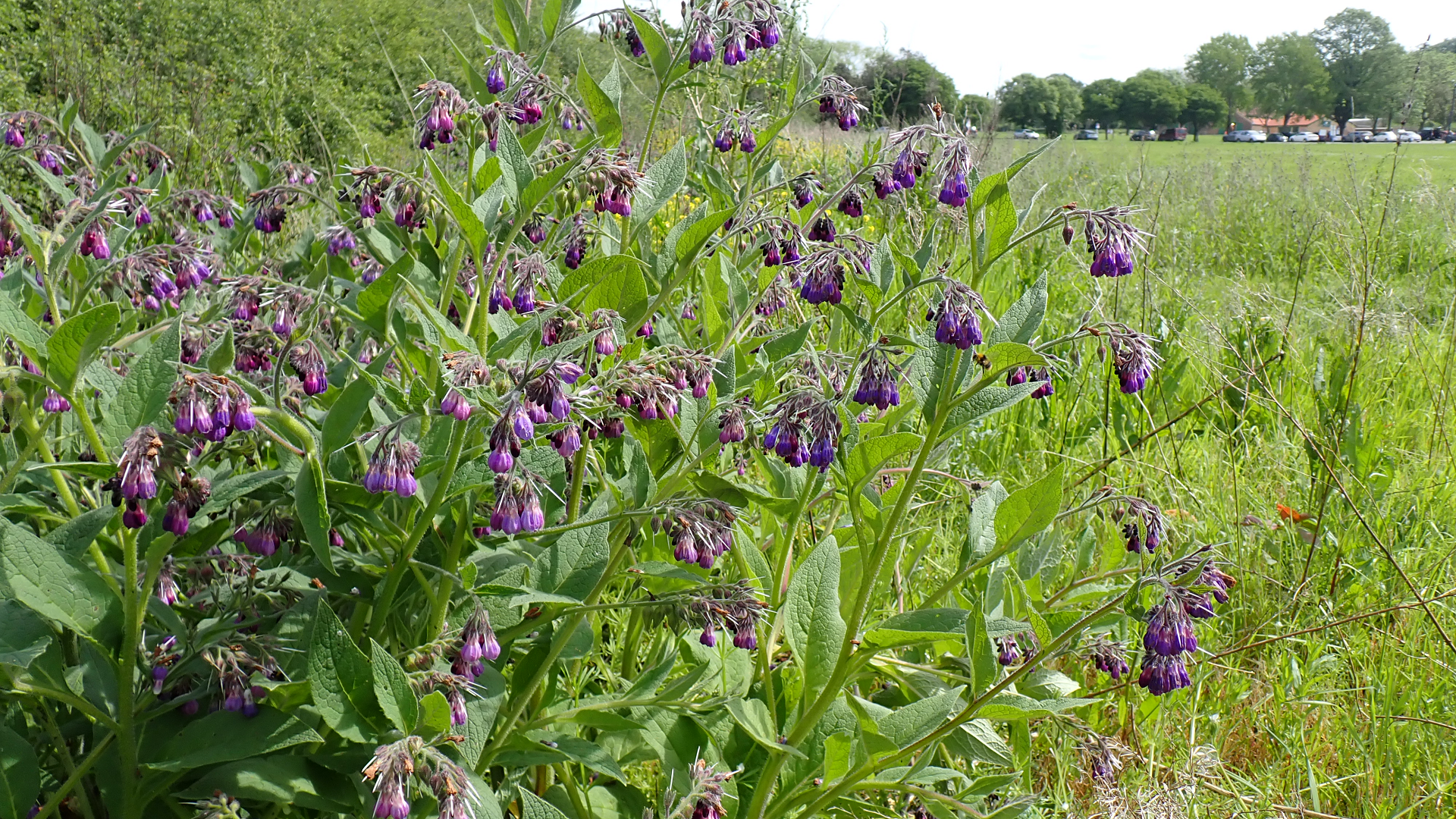
© Raymond Small TQ4792 14/05/2024
Russian Comfrey Symphytum x uplandicum grows up to 2 metres tall. The stems are narrowly winged below the leaves. Flowers are initially pink almost always becoming blue, violet, or purple. It appears from May to August.
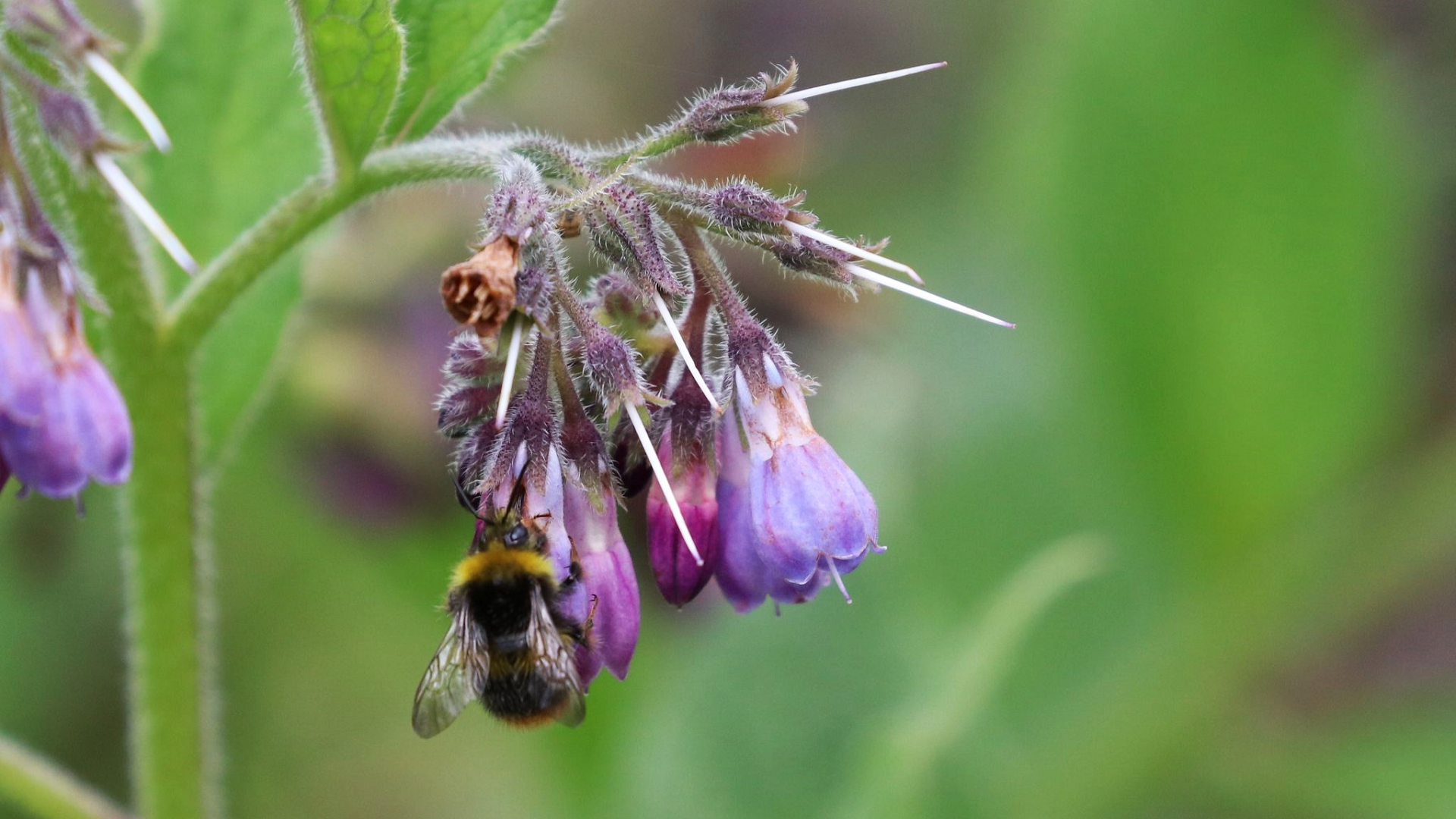
© Michael Trump TQ4792 17/05/2024
Bumblebees are often seen on Russian Comfrey in large numbers. Its flowers attract a wide range on insects including butterflies, beetles and froghoppers.
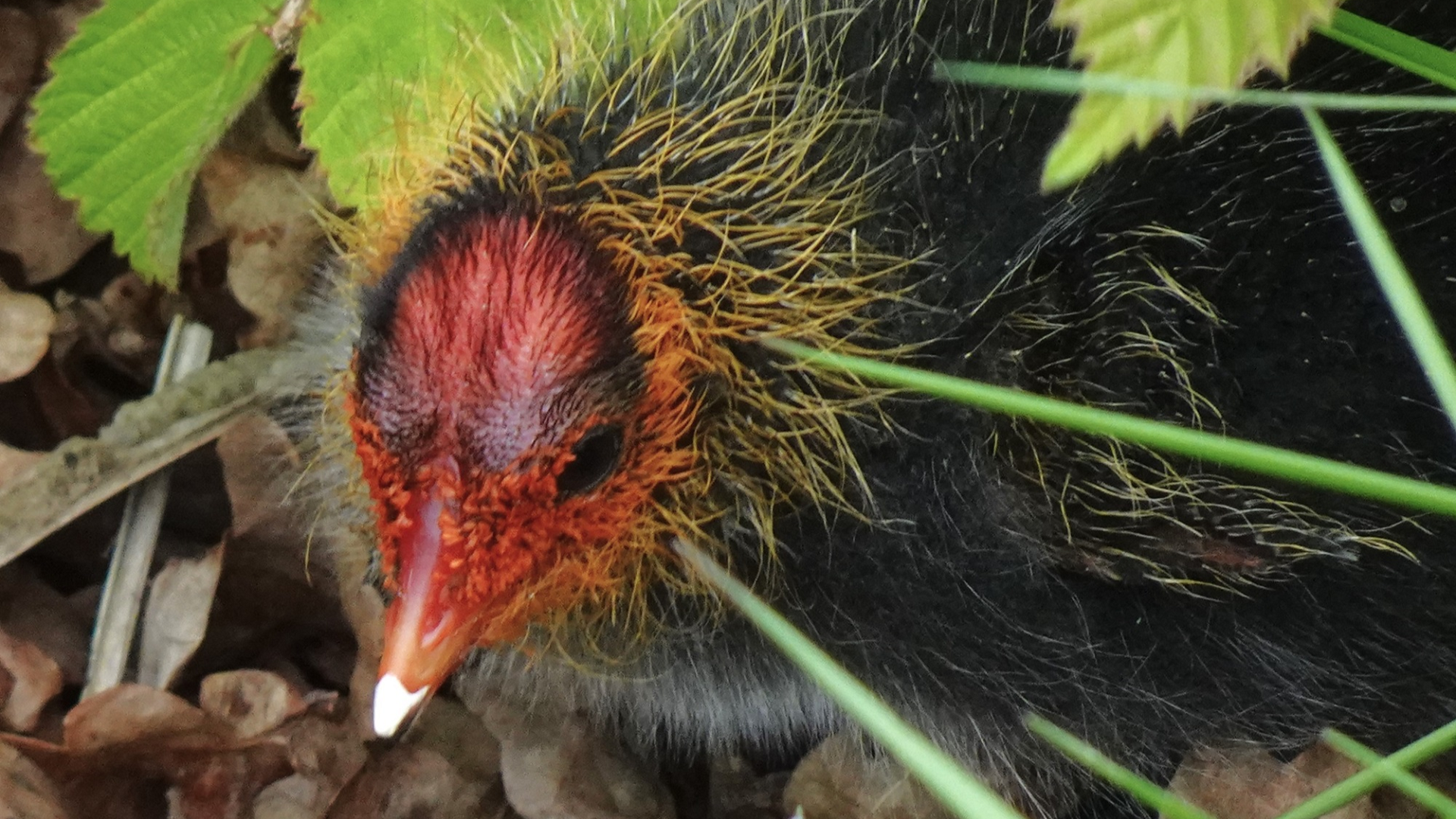
© Mike Rumble TQ4892 18/05/2024
A Cootling hiding in vegetation at the edge of a Hainault Golf Course pond. Cootlings are tended by both parents and leave the nest after 3 or 4 days. They are totally independent after about 8 weeks.
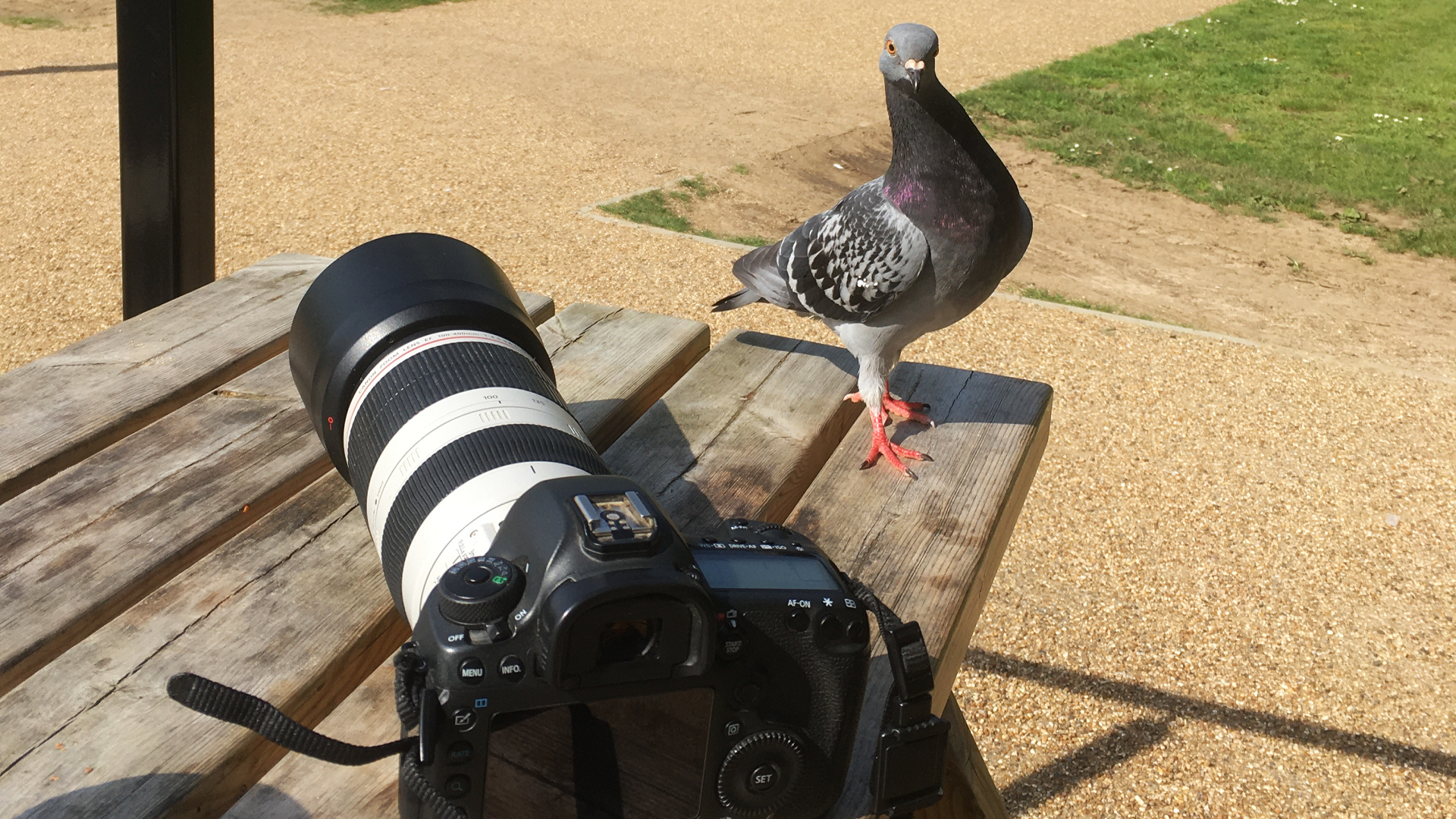
© Michael Trump TQ4792 10/05/2024
This well-groomed pigeon appeared at the Global Cafe for a few days during May. Pigeons are a lot cleaner than many people imagine.
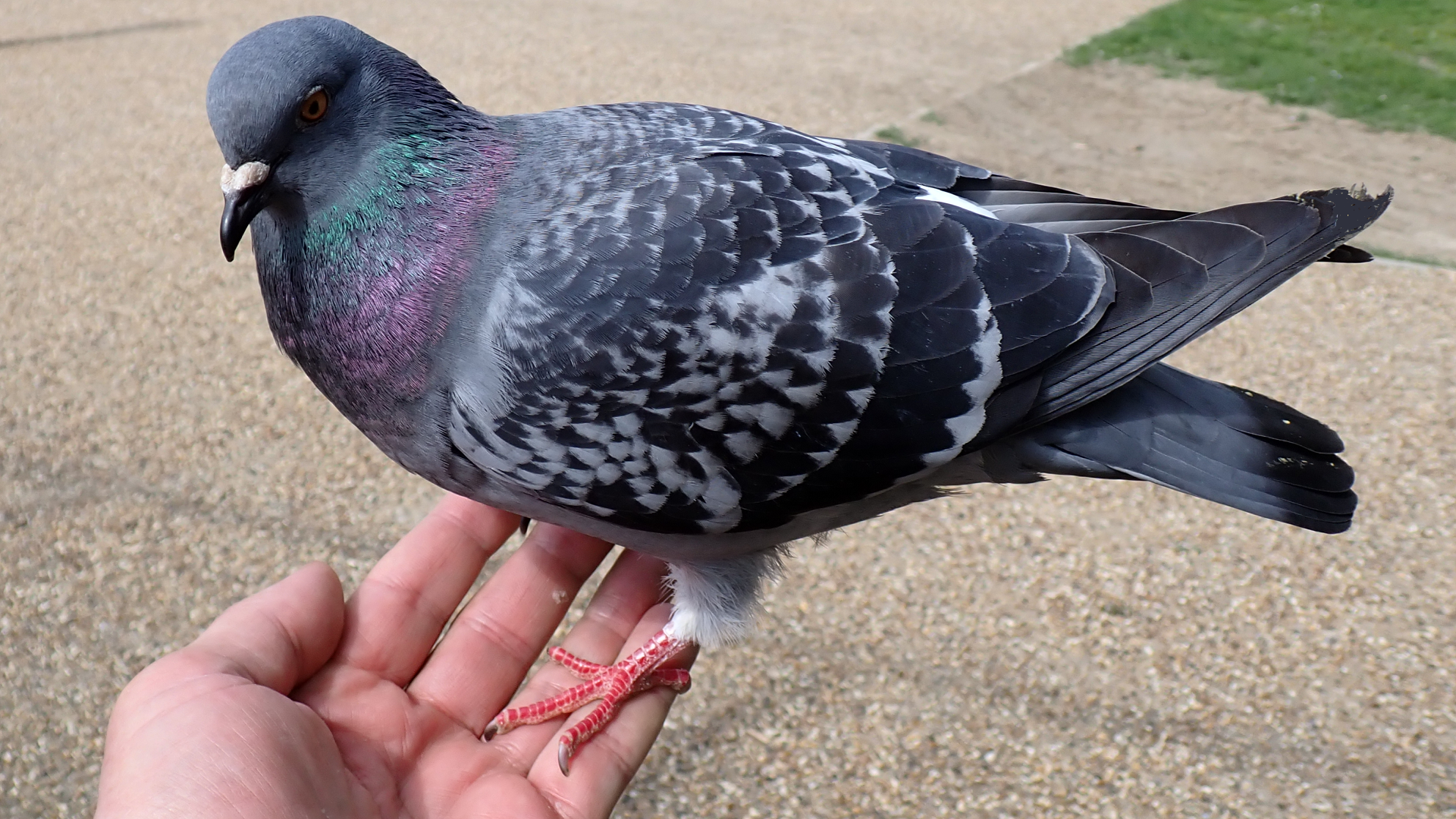
© Raymond Small TQ4792 13/05/2024
Ir wasn't long before the pigeon was resting on my hand. Later when going for a walk it kept landing nearby me and cooing loudly. A new friend!
Elsewhere on the web (BBC 26/05)
Woman's mission to give the birds a better image
Click the play button to begin the movie.
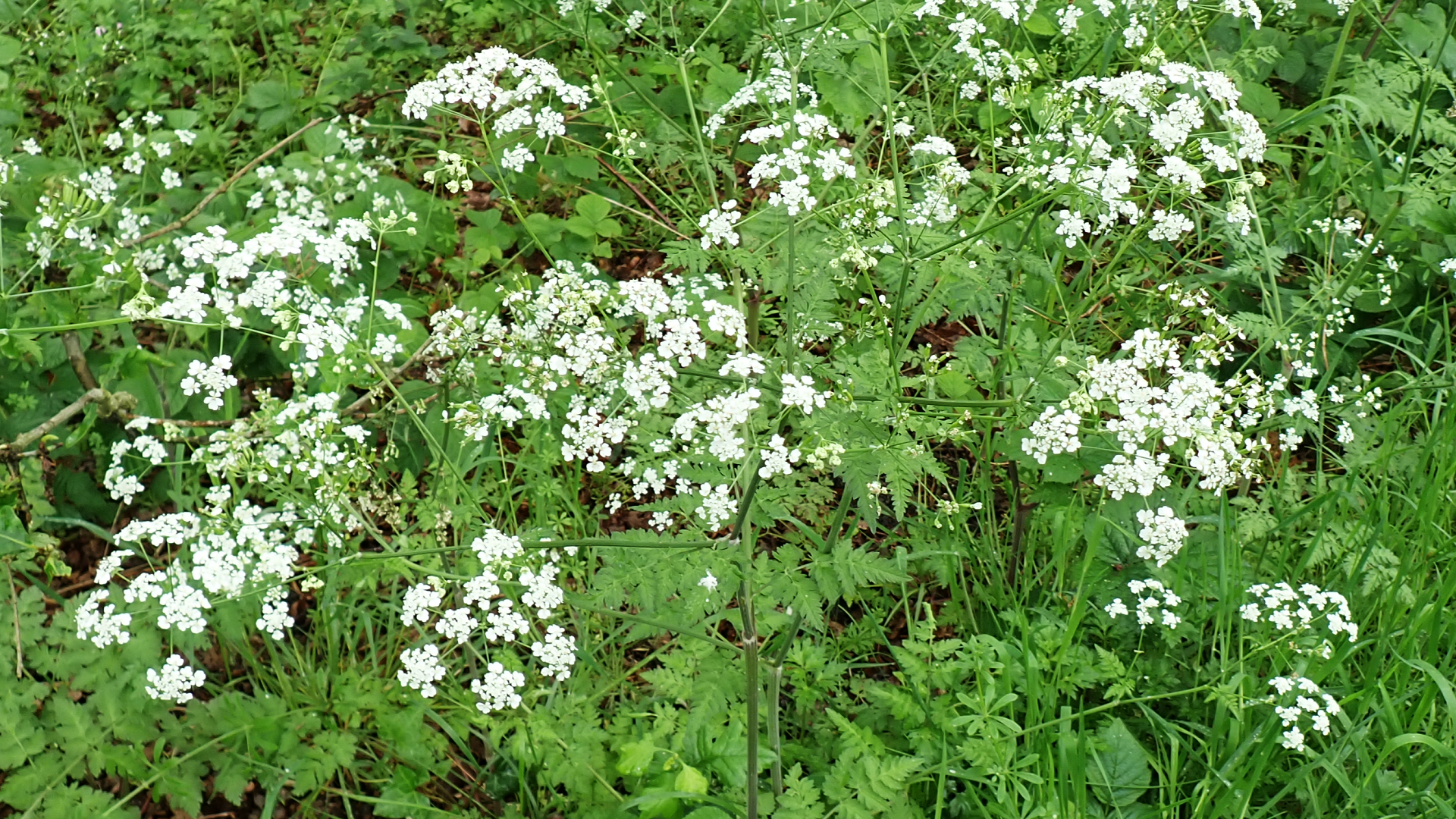
© Raymond Small TQ4792 14/05/2024
Cow Parsley Anthriscus sylvestris is a common member of the Carrot family. It appears in spring and is the earliest-flowering of the umbellifers. It has flat umbrellas of small white flowers and fern-like leaves.
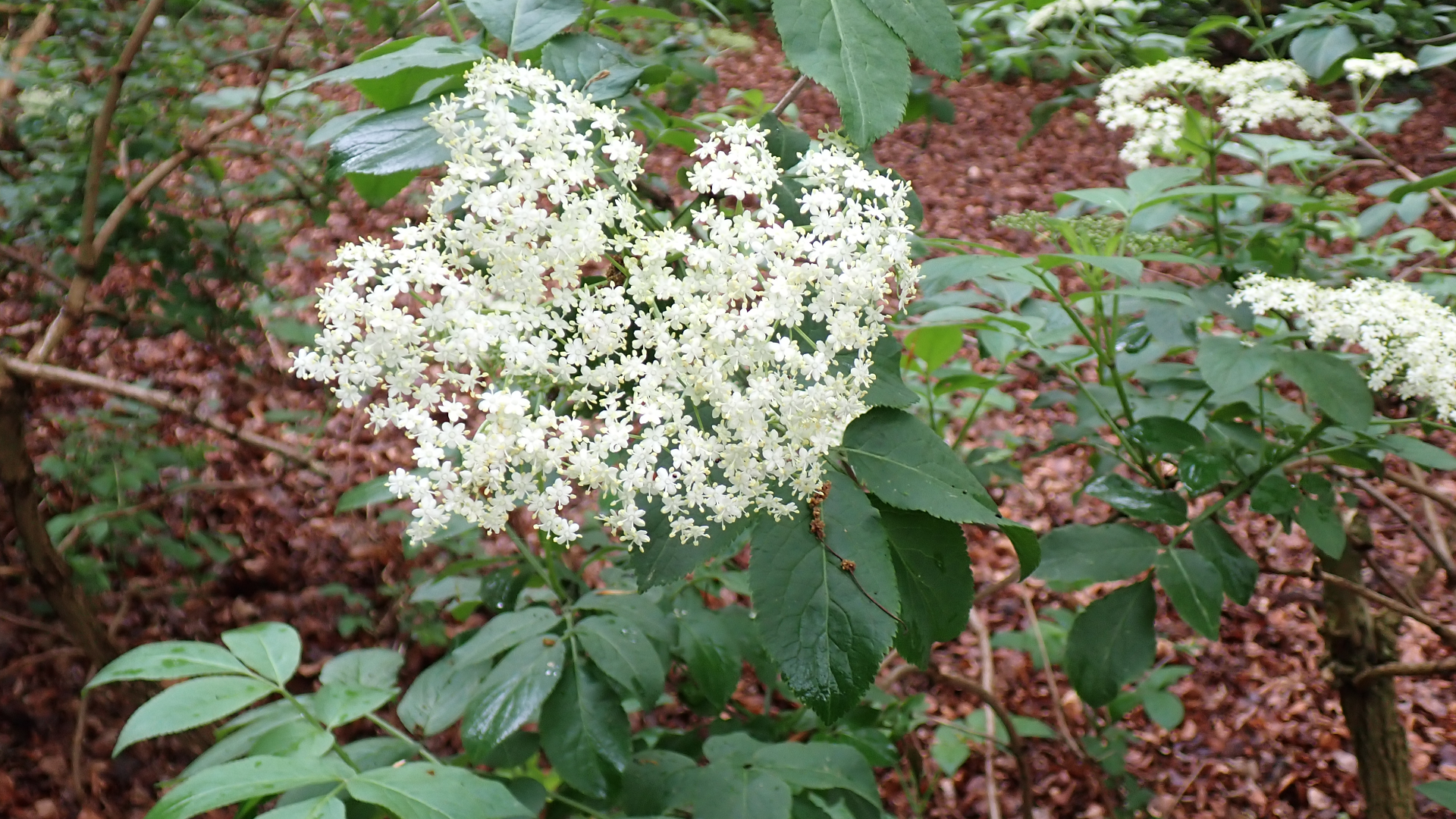
© Raymond Small TQ4792 14/05/2024
White flowers appear on Elder Sambucus nigra in umbrella-like clusters (umbels). Its compound leaves are divided into 5-7 leaflets. The plant produces blackish-purple berries during autumn.
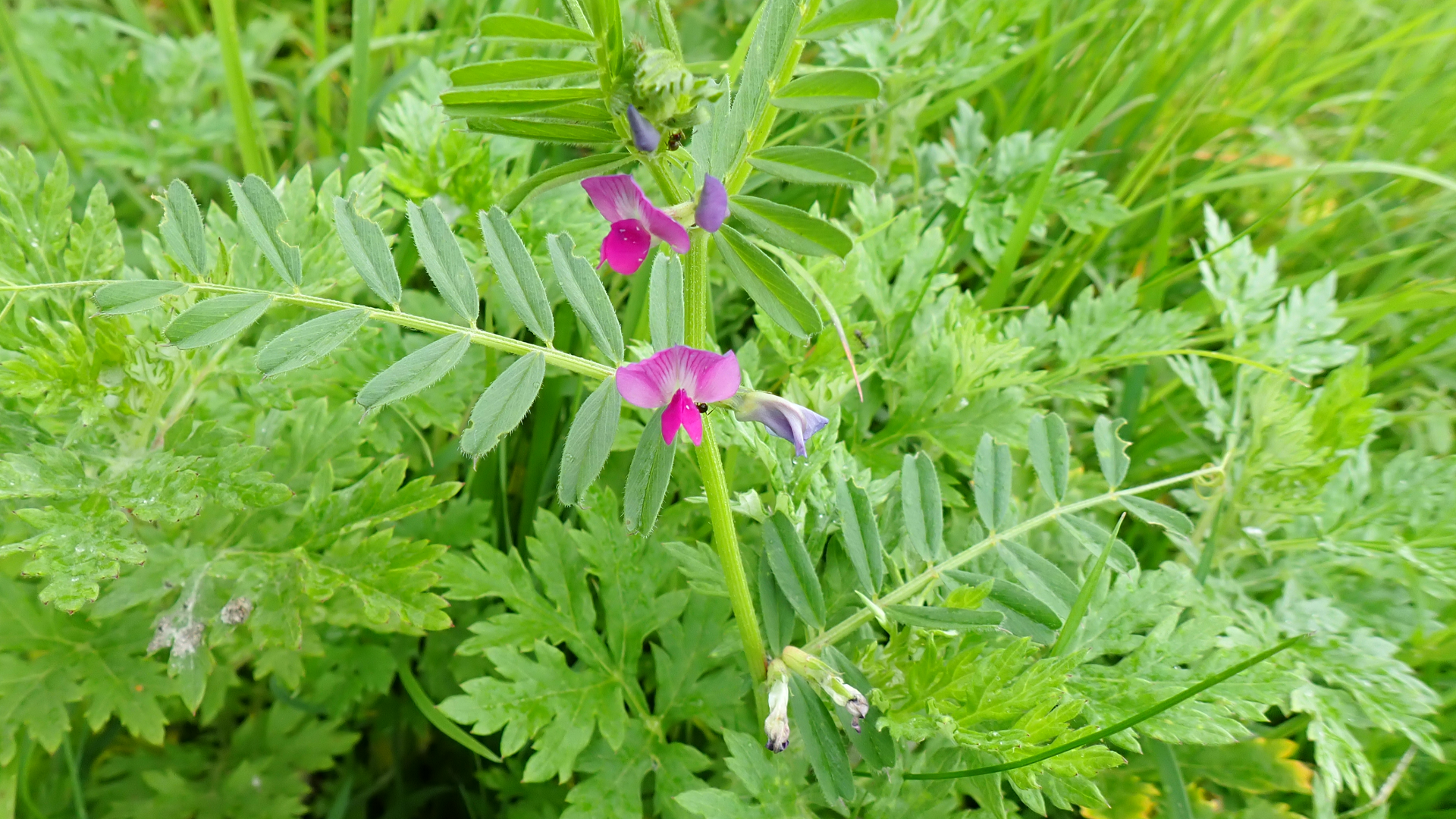
© Raymond Small TQ4792 14/05/2024
Common Vetch Vicia sativa is a sprawling plant with pinkish-purple flowers and long stems that have curly tendrils on the ends. Its opposite leaves growing along the stems are oval-shaped with a fold in the centre.
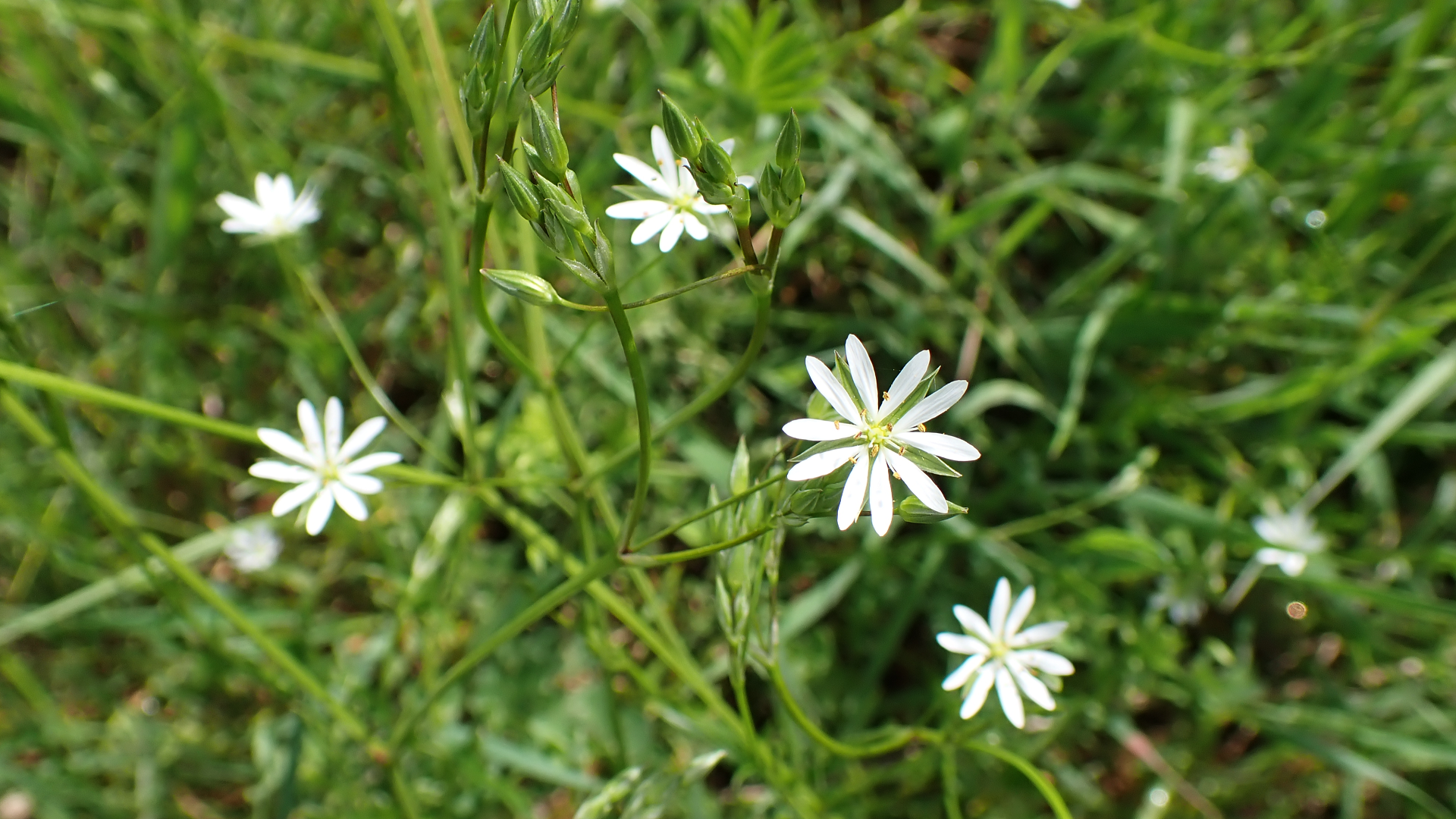
© Raymond Small TQ4792 17/05/2024
Lesser Stitchwort Stellaria graminea is a creeping perennial found in grassland from May to September, it bears small, white flowers bearing five deeply notched petals. The leaves are narrow and grass-like.
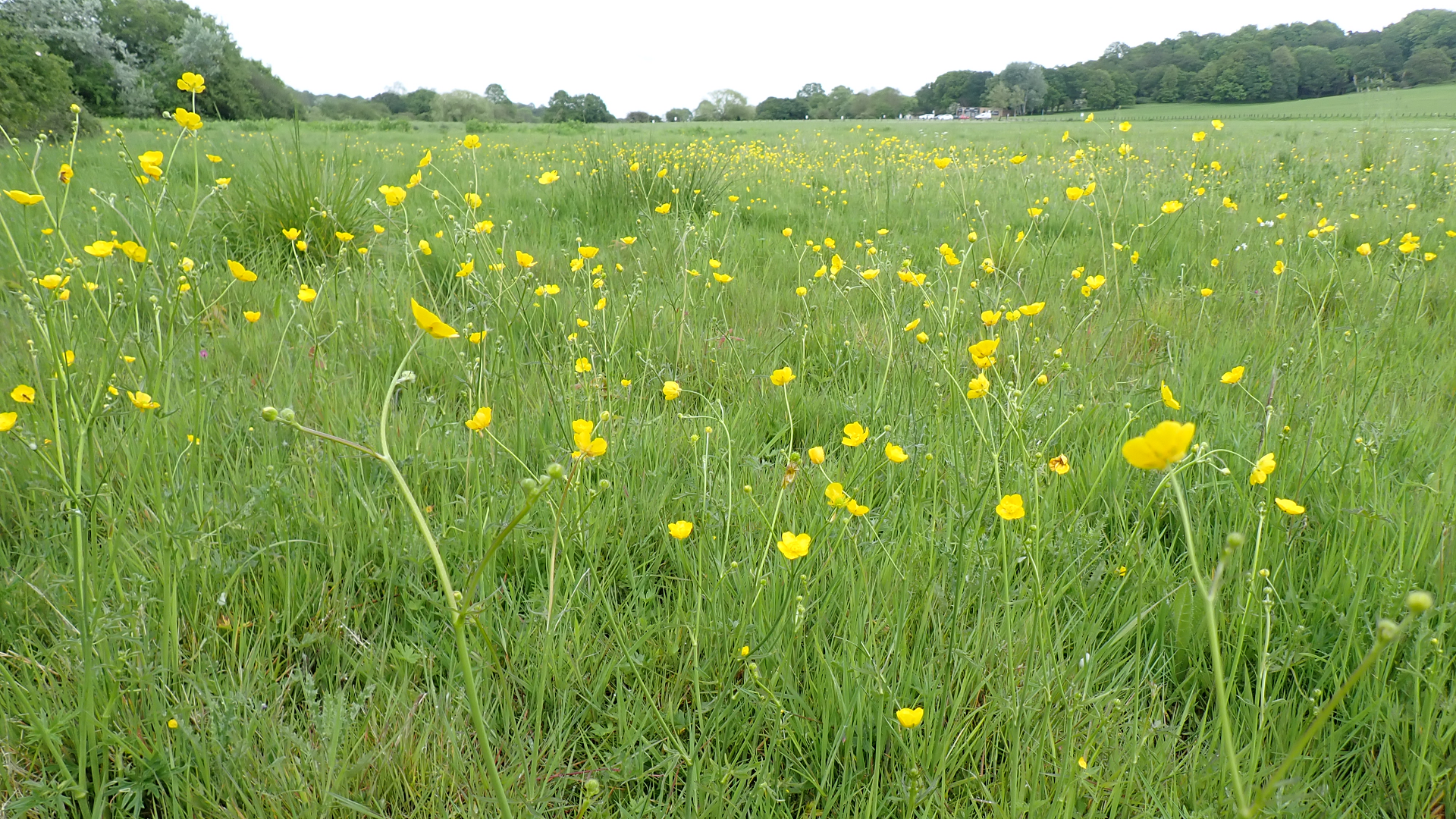
© Raymond Small TQ4792 14/05/2024
The Meadow Buttercup Ranunculus acrisis is common tall plant in damp meadows from spring until autumn. It grows up to one metre high and has five-petalled shiny yellow flowers measuring about 2cm across. The rounded leaves are divided into 3-7 lobes.
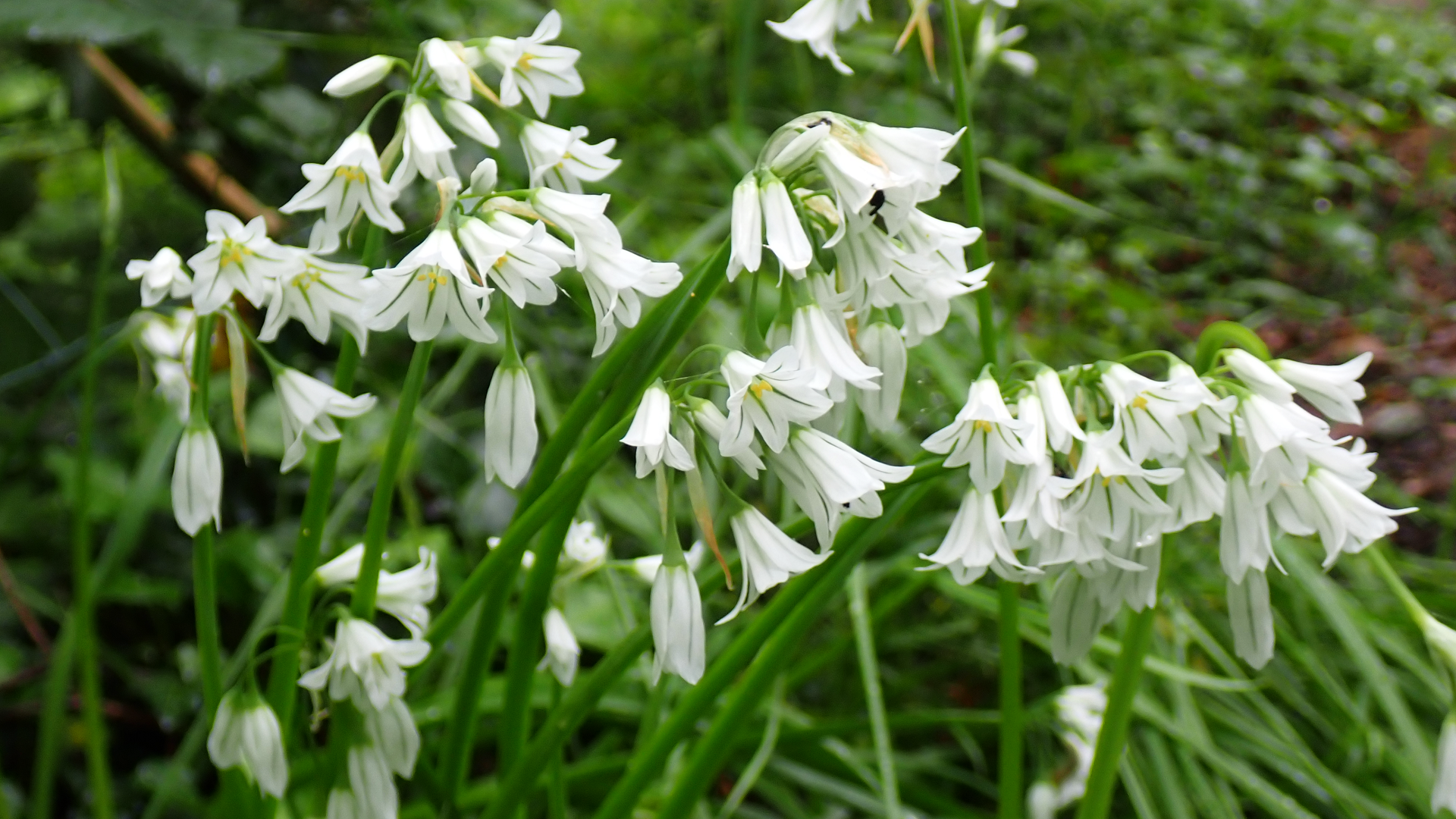
© Raymond Small TQ4792 14/05/2024
Three-cornered Leek Allium triquetrum is an invasive species originating from the Mediterranean in the 18th Century. Once established the plant forms dense clumps of growth. Pretty white flowers with green lines on the petals grow atop three-sided stems. It smells garlicky.
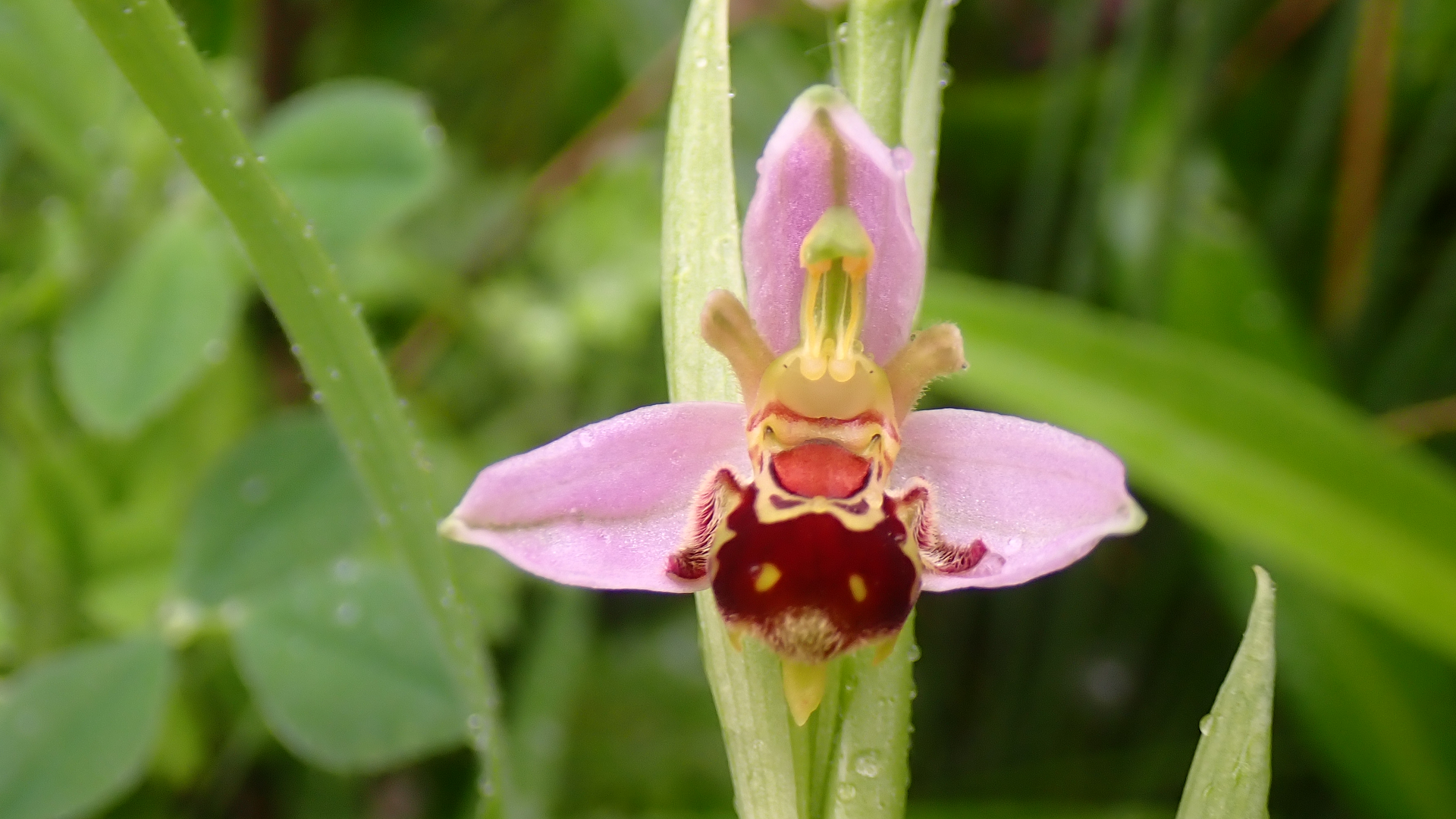
© Raymond Small TQ4792 21/05/2024
The appearance of Bee Orchids near Hainault Lake helped cheer up an otherwise wet and miserable rainy day in May. For some reason I always think of a smiling Court Jester wearing a fool's cap when I see these!
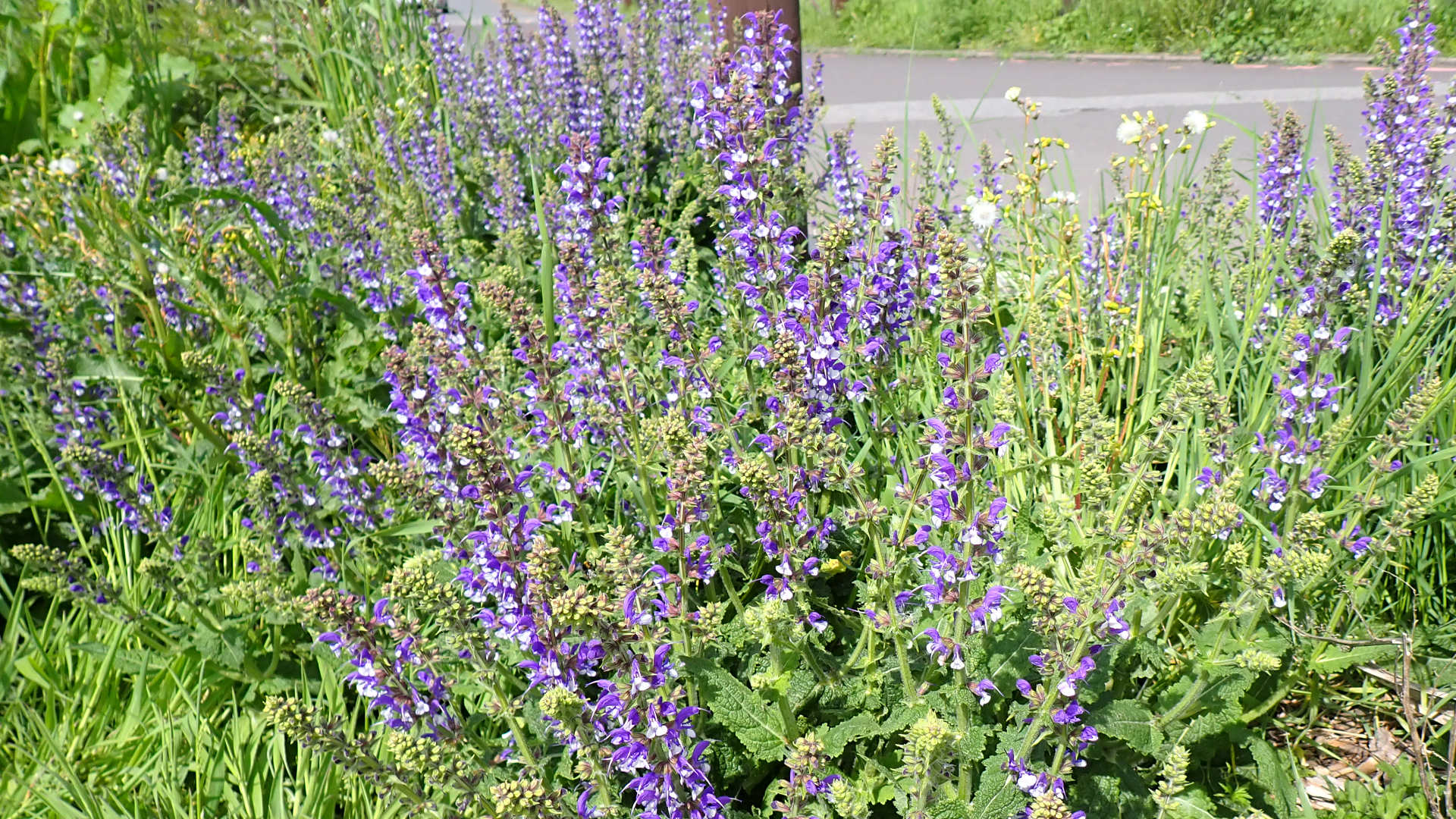
© Raymond Small TQ4792 17/05/2024
Meadow Sage Salvia sp. next to Foxburrow Road. Until the Hainault Forest restoration project this perennial did not occur naturally in the forest. It has upright, blooming spikes containing purple, blue and white flowers. Also known as Meadow Clary.
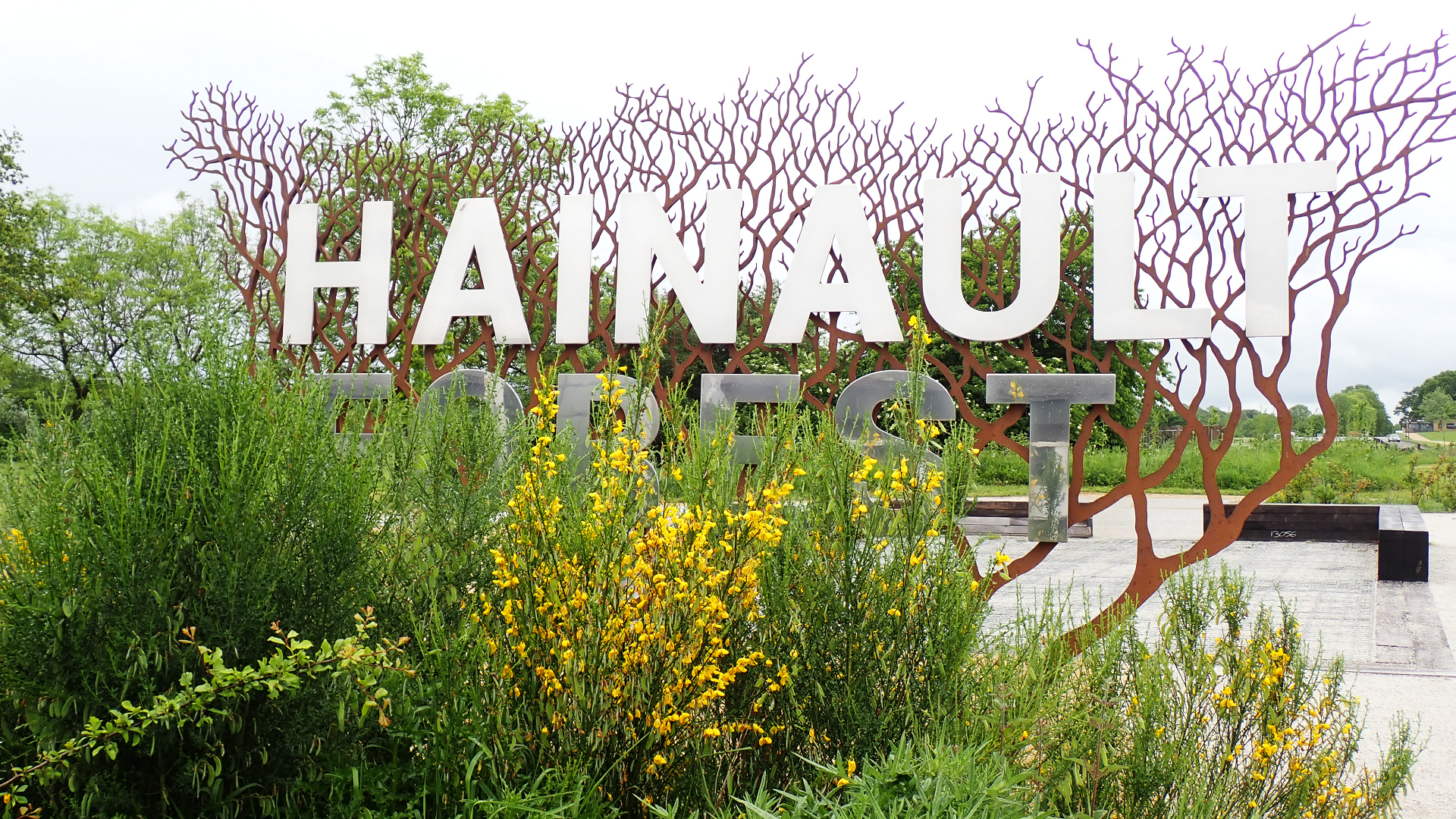
© Raymond Small TQ4792 02/05/2024
Bushes planted during the Hainault Forest restoration project at the main entrance are now well-established, but not yet fully grown. Broom has bright yellow flowers, unlike Gorse it doesn't have any spines and smells of vanilla. It has short, flattened leaves.

"Having spent the wartime Forties and the Fifties going to school in Hainault, I was saddened to learn of the fatal stabbing of Daniel Anjorin and the injuries to several police on the 30th April 2024. Daniel was a pupil at Bancroft’s school, Woodford. Many floral tributes were left by mourners outside his home on Lang Close, near Franklyn Gardens. His funeral was held on Friday 17th May at the family Church of Jubilee, in Ilford."
Brian Ecott
The website joins Brian in sending its condolences to Daniel's family.
Thank you to everyone that has shown an interest in this website and for making contributions.
Thank you to everyone that has shown an interest in this website and for making contributions.
